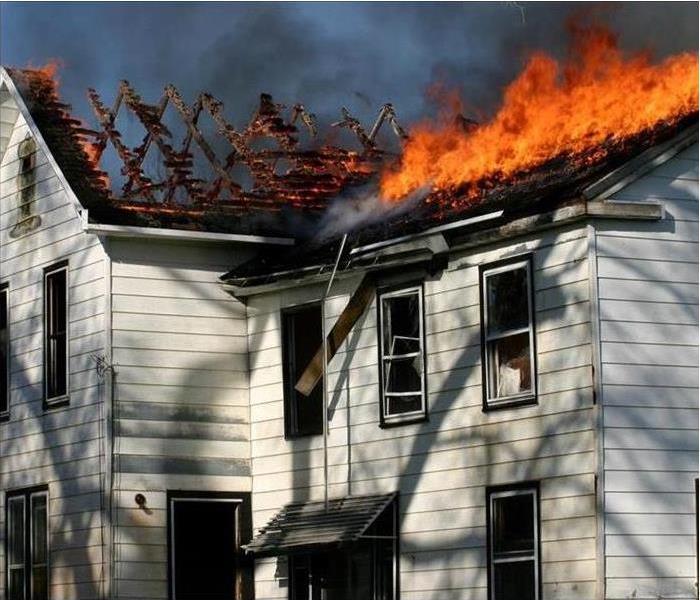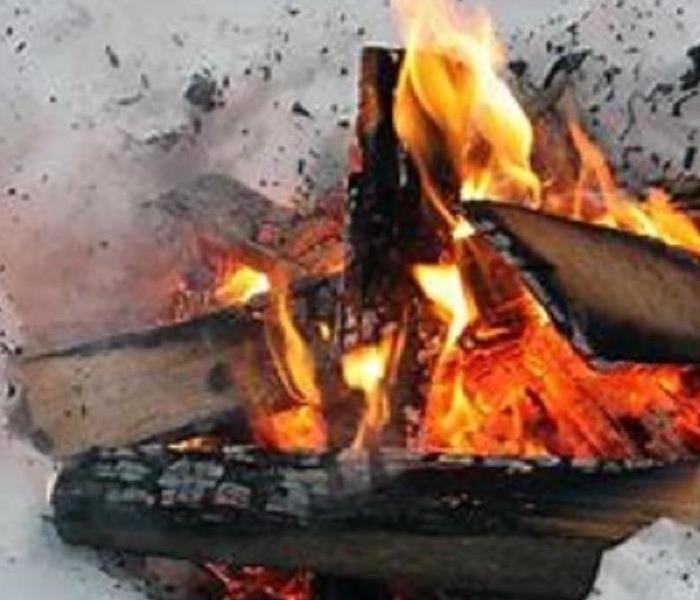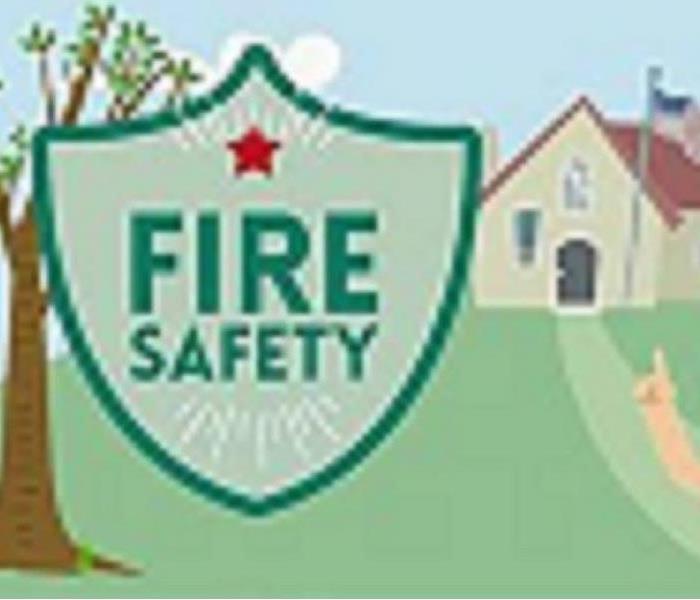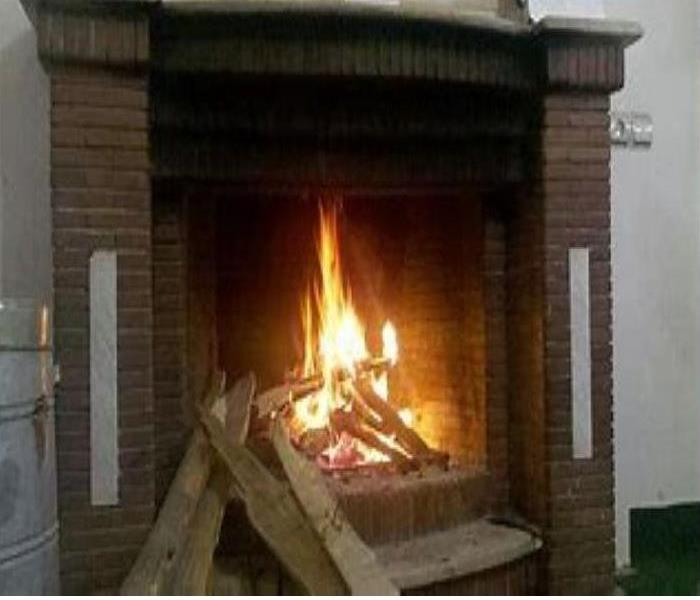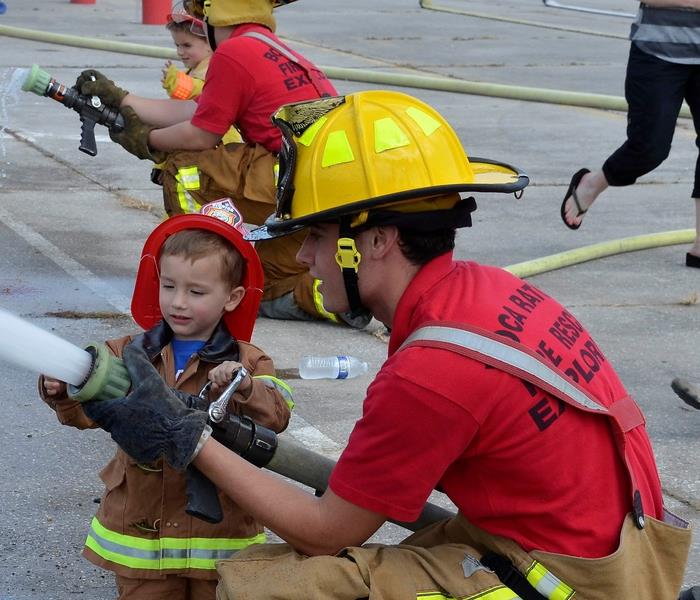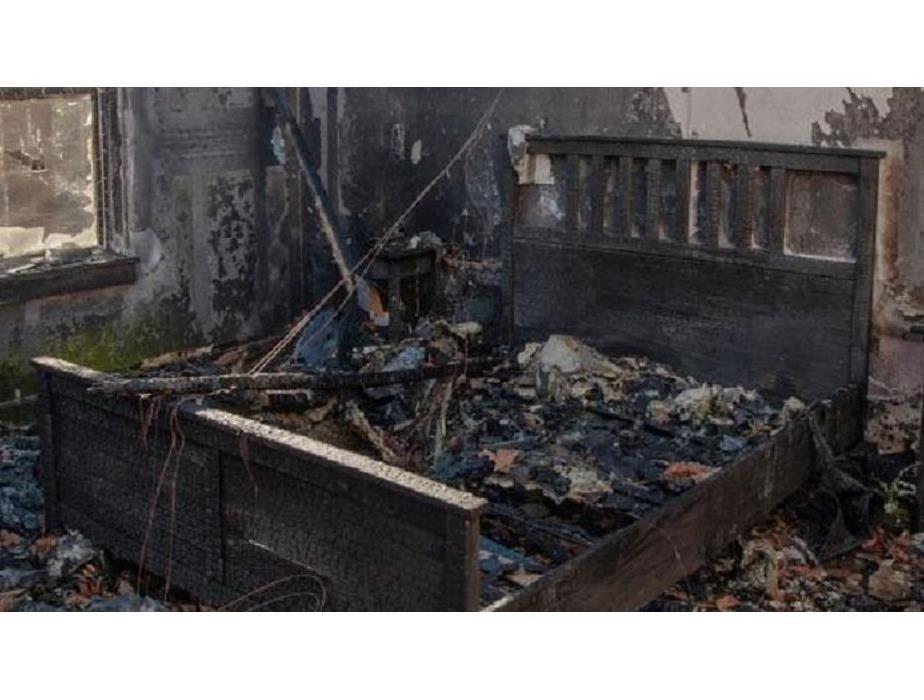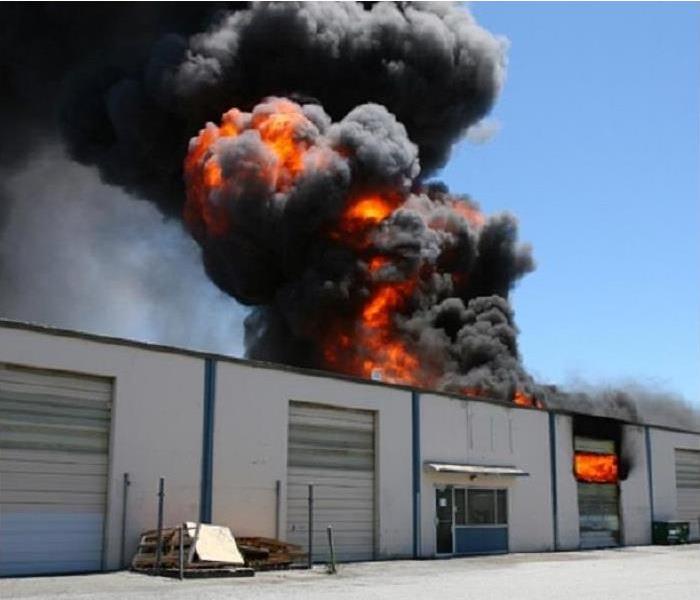Recent Fire Damage Posts
The Likelihood of Fires Increases In Winter
11/28/2023 (Permalink)
As the cold weather approaches, people often resort to alternative heating methods to stay warm. However, these methods can pose a fire hazard if not used with caution. To ensure safety during the winter months, it is important to keep the following four things in mind:
Fireplaces and Wood Burning Stoves
- Shield the fireplace with a grate to prevent flying sparks from igniting in the room.
- Keep any flammable materials at least 4 feet away from the fire place.
- Perform regular maintenance and cleaning on your fireplace and/or wood burning stove.
- Make sure there are no cracks in your chimney and that the top is properly capped to keep out debris throughout the year.
Space Heaters
- Use only space heaters with a “tip switch,” ones that shut off automatically if tipped over.
- Make sure to follow the manufacturer’s safety instructions.
- Keep the space heater at least 3 feet away from anything flammable.
- Make sure there is adequate ventilation and base/floor support in the areas where you will use a space heater.
Electric Blankets
- Check for charred or frayed cords or any dark spots, these may indicate a potential problem with the electrical element.
- Don’t allow anyone or anything on top of the blanket when it is in use, this could lead to overheating.
- Similarly, don’t fold or tuck in the blanket when it is in use, as this could also lead to overheating.
- An electric blanket should never be left unattended or used while one is sleeping.
Smoke Alarms
It is always a good idea to check your fire alarms on a regular basis, preferably once a year. Before lighting a fire or using a heating element, make sure to double-check your alarms.
At SERVPRO of Milton/Braintree, we take pride in being leaders in the community for both fire prevention and fire damage restoration. Our company is locally owned and operated and is part of a nationwide franchise network with specialized Disaster Recovery Teams to handle fire catastrophes. We understand how devastating a fire can be and believe prevention tips should be discussed more frequently.
Fire Prevention Month: Fire Safety Tips
10/4/2023 (Permalink)
October is Fire Prevention Month, so we are here to provide fire safety tips and tricks to keep your family and home safe.
Many home fires can be avoided if proper fire prevention techniques are in place.
1. The first thing that you need to do is educate yourself on the different types of smoke detectors that are on the market. There are two kinds of smoke detectors on the market, ionization and photoelectric. Ionization smoke detectors are best used for detecting the smoke that is given off from flaming fires where the photoelectric smoke detector is best for detecting the smoke particles given off from smoldering fires. The National Fire Protection Association will tell you that most deaths in home fires are due to smoke inhalation. However, since each alarm is equipped to detect different types of fires, and there is no way to determine which kind of fire will break out in a home, it is best to purchase both.
2. You need to have a fire extinguisher in your home. If a blaze does happen to break out in your home, you are probably going to evacuate and not attempt to battle the blaze, but that does not mean you should not keep a fire extinguisher in your home. The fire extinguisher is like a tool, you want to have it and better it just sits there, and you never have to use it than need it and not have it there when you need it. Sure, fire extinguishers are unsightly, but if you are stuck in a fire and flames block the only exit, that fire extinguisher is going to be the best-looking thing you have ever seen!
3. Every home must have a fire evacuation plan, and you need to practice it a few times a year, especially if you have children. There is nothing more tragic than a family escaping a home fire only to have a member of the family run back into a burning home because they think they are going to get someone who they believe to be still in there but is safely somewhere else. Make sure everyone in your family knows the evacuation plan from the home in the event of a fire and make sure everyone knows where the family is supposed to meet. Explain the value of staying at the meeting place and waiting there, and practice, practice, practice that plan.
If you are interested in learning more about fire damage restoration services call us at 781-980-7060.
What do I do after a fire?
9/20/2023 (Permalink)
A fire can be devastating for your home or business and getting started on the restoration process can be truly overwhelming. Your property may have suffered fire and smoke damage, as well as widespread water damage and flooding from firefighting efforts. With SERVPRO of Milton/Braintree's specialized fire and water damage restoration experience, we can help get your home or business cleaned up and restored to its pre-fire condition.
What to do after a fire:
- Secure openings made to your property by firefighters using sturdy, durable materials designed to protect your home from both weather intrusion and intrusion by outsiders.
- Keep hands clean so as not to further soil upholstery, walls, and woodwork.
- Place clean towels or old linens on rugs, upholstery, and carpet traffic areas.
- If the electricity is off, empty the freezer and refrigerator and prop the doors open.
- Clean and protect chrome with a light coating of petroleum jelly or oil.
- Wash houseplants on both sides of the leaves.
Determine the Type of Cleaning Needed
Before starting the cleanup process it's extremely helpful to know what type of fire damage has occurred. There are different types of fire, smoke, and soot and each requires a different cleanup method to best restore your property. Prior to beginning the restoration process, our professional technicians will test the soot to help determine which type of smoke damage occurred and will design the cleanup procedure based on that information.
The Different Types of Fire/Smoke/Soot Can Include:
- Wet Smoke – Usually from Plastics and Synthetics
- Occurs from Low heat, smoldering, pungent odor, sticky, smeary.
- Dry Smoke – Produced from Paper and Wood
- Fast burning, high temperatures, dry, powdery, non-smeary residues.
- Protein Fire Residue – Produced by the evaporation of material rather than from a fire
- Virtually invisible, discolors paints and varnishes, extreme pungent odor.
- Fuel Oil Soot – Furnace Puff Backs
- Other Types – Tear gas, fingerprint powder and fire extinguisher residue.
SERVPRO of Milton/Braintree has what it takes to restore your home back to preloss condition. Let us help you make it “Like it never even happened”.
The Basics of Cleaning After a Fire Loss
11/9/2022 (Permalink)
Fire damage is never expected and can turn your world upside down. Here at SERVPRO of Milton/Braintree, we have fire and restoration trained professionals and resources to get you back on your feet in no time.
The process always begins with an evaluation of what items can and cannot be cleaned. We take great care to treat your fire damaged home and belongings with great care and use a multi-step cleaning process to salvage as many items as possible. We use both dry and wet methods of cleaning to achieve the best results. Dry methods of cleaning consist of dry sponging, HEPA-vacuuming and using a Masslinn dust cloth for cleaning delicate content. Our wet methods of cleaning consist of using both a cleaning agent and a deodorizer. The deodorizer has both a masking and a pairing agent. The pairing agent removes the odor and the masking agent leaves a refreshing smell. By using both of these fire restoration cleaning products, our process helps to eliminate both the dirt left behind from the fire as well as preventing any lingering smell from returning.
After a fire it's difficult to know what the first step should be to get back on your feet. SERVPRO of Milton/Braintree is here to help. Take a deep breath, and call us at 781-980-7060. We work hard to restore your home to pre-fire condition so you can feel like it never even happened.
Fire Safety Tips For Your Home
10/4/2022 (Permalink)
Many home fires can be avoided if proper fire prevention techniques are in place. Here are some fire safety steps to implement in your home and prevent the need for fire damage restoration.
1. The first thing that you need to do is educate yourself on the different types of smoke detectors that are on the market. There are two kinds of smoke detectors on the market, ionization and photoelectric. Ionization smoke detectors are best used for detecting the smoke that is given off from flaming fires where the photoelectric smoke detector is best for detecting the smoke particles given off from smoldering fires. The National Fire Protection Association will tell you that most deaths in home fires are due to smoke inhalation. However, since each alarm is equipped to detect different types of fires, and there is no way to determine which kind of fire will break out in a home, it is best to purchase both.
2. You need to have a fire extinguisher in your home. If a blaze does happen to break out in your home, you are probably going to evacuate and not attempt to battle the blaze, but that does not mean you should not keep a fire extinguisher in your home. The fire extinguisher is like a tool, you want to have it and better it just sits there, and you never have to use it than need it and not have it there when you need it. Sure, fire extinguishers are kind of unsightly, but if you are stuck in a fire and flames block the only exit, that fire extinguisher is going to be the best-looking thing you have ever seen!
3. Every home must have a fire evacuation plan, and you need to practice it a few times a year, especially if you have children. There is nothing more tragic than a family escaping a home fire only to have a member of the family-run back into a burning home because they think they are going to get someone who they believe to be still in there but is safely somewhere else. Make sure everyone in your family knows the evacuation plan from the home in the event of a fire and make sure everyone knows where the family is supposed to meet. Explain the value of staying at the meeting place and waiting there, and practice, practice, practice that plan.
SERVPRO of Milton/Braintree professionals are industry leaders in fire restoration services nationwide. Should disaster strike, we can help: 781-980-7060.
Why you need SERVPRO of Milton/Braintree after a fire
9/22/2022 (Permalink)
After a fire you may need SERVPRO of Milton/Braintree fire services very quickly in order to prevent damage from spreading through your property.
Say a fire burns a hole in your roof for instance. This could then lead to a situation where you have rain coming in through your ceiling and ruining your property more – the longer you leave this the more the extent of the damage is going to increase and thus you need to get SERVPRO of Milton/Braintree emergency services whenever possible rather than waiting for the problem to get more severe.
SERVPRO of Milton/Braintree will assess the damage and put a plan together. We offer board-up services along with the clean-up. During the clean-up we can address both the fire and water damage at the property.
During this fire damage restoration process, we will ensure the removal of any odors that can linger after the smoke has been in the room. This might involve carpet cleaning as well and will often need to address adjacent rooms as well as those directly affected by fire damage.
Finally, the clean-up part of the fire damage restoration process will also involve the removal and disposal of items that are too badly damaged to be repairable. If you have furniture for instance that has absorbed a lot of contaminated water, or if you have carpet that has been badly burned… in these cases often the best case scenario is just to throw these things out and to replace them with new items.
The Basics of Cleaning After a Fire Loss
2/3/2022 (Permalink)
No one anticipates fire damage, and it can turn your world upside down. Here at SERVPRO of Milton/Braintree, we have fire and restoration trained professionals and resources to get you back on your feet quickly.
The process always begins with an evaluation of what items can be cleaned and restored. We take great care to treat your fire damaged home and belongings and use a multi-step cleaning process to salvage as much as possible. We use both dry and wet methods of cleaning to achieve the best results. By using both of these fire restoration cleaning methods, our process helps to eliminate both the dirt left behind from the fire as well as preventing any lingering smell from returning.
After a fire it is difficult to know what the first steps should be. SERVPRO of Milton/Braintree is here to help. Take a deep breath, and call us at 781-980-7060.
The First Steps to Take After a Fire
12/23/2021 (Permalink)
A fire can be devastating for your home or business and getting started on the restoration process can be truly overwhelming. Your property may have suffered fire and smoke damage, as well as widespread water damage and flooding from firefighting efforts. With SERVPRO of Milton/Braintree's specialized fire and water damage restoration experience, we can help get your home or business cleaned up and restored to its pre-fire condition. We'll even remove the pervasive smoke odor and soot by deep cleaning your upholstery and carpet.
What to do after a fire:
- Secure openings made to your property by firefighters using sturdy, durable materials designed to protect your home from both weather intrusion and intrusion by outsiders.
- Keep hands clean so as not to further soil upholstery, walls and woodwork.
- Place clean towels or old linens on rugs, upholstery and carpet traffic areas.
- If electricity is off, empty freezer and refrigerator and prop doors open.
- Clean and protect chrome with light coating of petroleum jelly or oil.
- Wash houseplants on both sides of leaves.
What NOT to do after a fire:
- Don't attempt to wash any walls or painted surfaces or shampoo carpet or upholstery without contacting a SERVPRO of Milton/Braintree Professional.
- Don't attempt to clean any electrical appliances that may have been close to fire, heat, or water without consulting an authorized repair service.
- Don't use any canned or packaged food or beverages that may have been stored near the fire, heat, or water.
- Don't turn on ceiling fixtures if the ceiling is wet. The wiring may be damaged.
- Don't send garments to an ordinary dry cleaner. Improper cleaning may destroy your garments.
Determine the Type of Cleaning Needed
Before starting the cleanup process it's extremely helpful to know what type of fire damage has occurred. There are different types of fire, smoke, and soot and each requires a different clean up method to best restore your property. Prior to beginning the restoration process, our professional technicians will test the soot to help determine which type of smoke damage occurred and will design the clean up procedure based on that information.
The Different Types of Fire/Smoke/Soot Can Include:
- Wet Smoke – Usually from Plastics and Synthetics
- Occurs from Low heat, smoldering, pungent odor, sticky, smeary.
- Dry Smoke – Produced from Paper and Wood
- Fast burning, high temperatures, dry, powdery, non-smeary residues.
- Protein Fire Residue – Produced by the evaporation of material rather than from a fire
- Virtually invisible, discolors paints and varnishes, extreme pungent odor.
- Fuel Oil Soot – Furnace Puff Backs
- Other Types – Tear gas, fingerprint powder and fire extinguisher residue.
SERVPRO of Milton/Braintree has what it takes to restore your home back to preloss condition. Let us help you make it “Like it never even happened.” Call us at 781-980-7060.
Why Fires are more likely to occur in winter
12/21/2021 (Permalink)
More fires occur during the winter months than any other time of the year
During the winter season, people tend to find extra ways to keep warm. Unfortunately, many alternative heating methods are also fire hazards, especially when caution is not used.
To prevent fire damage during this cold weather season, keep these four things in mind:
Fireplaces and Wood Burning Stoves
Here are some precautions you can take to keep your fireplace or wood burning stove safe:
- Shield the fireplace with a grate to prevent flying sparks from igniting in the room.
- Keep any flammable materials at least 4 feet away from the fire place.
- Perform regular maintenance and cleaning on your fireplace and/or wood burning stove.
- Ensure there are no cracks in your chimney and that the top is properly capped to keep debris out throughout the year.
Space Heaters
Here are some general rules to follow for safe space heater use:
- Use only space heaters with a “tip switch,” ones that shut off automatically if tipped over.
- Make sure to follow the manufacturer’s safety instructions.
- Keep space heaters at least 3 feet away from anything flammable.
- Check that there is adequate ventilation and base/floor support in the areas where you will use a space heater.
Electric Blankets
Important things to know about electric blanket safety:
- Check for charred or frayed cords or any dark spots, these may indicate a potential problem.
- Don’t allow anyone or anything on top of the blanket when it is in use, as it may lead to overheating.
- Similarly, do not fold or tuck in the blanket when it is in use, this could also lead to overheating.
- An electric blanket should never be left unattended or used while one is sleeping.
Smoke Alarms
It is a good idea to regularly check your alarms every year. It is also wise to double-check the alarms before you start a fire or use a heating element.
Here at SERVPRO of Milton/Braintree we pride ourselves in being community leaders in both fire prevention and fire damage restoration. Our company is not only locally owned and operated, we’re also part of a nation-wide network of franchises with specialized Disaster Recovery Teams that handle fire catastrophes. We know how devastating a fire can be – and, unfortunately, the tips for prevention are often not talked about as much as they should be. We want to help change that.
How Does a Furnace Puff Back Occur?
11/9/2021 (Permalink)
A misfiring in the furnace causes a puff back that can send soot throughout your home. When an oil burner doesn't immediately ignite, and oil fumes are allowed to build up before ignition, a small explosion can occur – similar to a backfiring of a car. Furnace puff backs can also result from a buildup of debris in your furnace that create an excessive explosion when the furnace is ignited. In both scenarios, the explosion shoots debris through the furnace's exhaust system and into your home. For homes with a forced hot air system, the damage can be much more extensive since the ducts will help spread the soot as easily as they spread heat throughout your home. In addition to the damage caused to your home by a puff back, it's also a sign of a problem in your heating system which will need to be repaired to prevent any further misfirings.
Contact SERVPRO of Milton/Braintree at 781-980-7060 to help you restore your property in the event of a furnace puff back.
Our smoke and fire damage specialists have the equipment and training to quickly return your home to a safe, clean, and comfortable environment for you and your family. We're faster to any disaster and are dedicated to responding immediately so that you can recover quickly, with less disruption to your life.
The Damaging Effects from Smoke In Your Home
10/8/2021 (Permalink)
A house fire can be devastating and is something no homeowner wants to experience.
However, if a fire does occur in your home, we are are available to help you recover from the damage. It's important to know exactly how and where fire damage can impact your home before the clean up process begins, especially since some areas of your home may have smoke damage that's not visible.
Unexpected Issues from Fire and Smoke Damage
After a fire, it's usually evident what smoke damage looks like in your home - whether it's charred items, discolored walls, or ash and soot on the floor - but it can also produce smells and other side effects that are harmful to surfaces as well as your health. It's also important to note that some signs of smoke damage can occur immediately, while others are only apparent several hours - or even days - after the fire.
DISCOLORATION:
Shortly after a fire, the effects of smoke damage are visible on walls, ceilings and surfaces, appearing as stains and discoloration. Within a few days, walls and flooring may begin to turn yellow; however, this yellowing affect doesn't show right away. Plastic surfaces/appliances and wood can also become discolored and warped. Several hours after a fire, metal hardware can show signs of rust and corrosion. If you have counter-tops, tiles or other surfaces that contain porous stone such as marble, granite or travertine, they usually become permanently discolored from the acidic residue found in soot. This residue can also permanently tarnish metals.
ODOR:
Surfaces of your home, specifically fabric items, may not only show visible signs of fire damage, but also may contain a smoky odor. Smoke produces tiny particles of carbon in the air, and when deposited, these particles are called soot. Getting rid of the smoke residue, or soot, is the first step to reducing the smell of a fire.
Smoke is made up of several components, which contribute to the smell that lingers after fire damage.
- Particles - partially or completely burned substances that are sometimes toxic and can penetrate surfaces and fabrics.
- Vapors - misty, fog-like droplets that can be poisonous if inhaled or absorbed.
- Toxic gases - although it is odorless, carbon monoxide (CO), is the most common toxic gas that results from a fire. Phosgene is created when household products such as vinyl, plastics and other chemicals and solvents containing chlorine materials are burned. Hydrogen cyanide is a by-product from the combustion and burning of insulation, carpets, clothing, synthetics, and plastics, such as PVC pipe.
The smell of smoke gets trapped in clothing, carpets, drapes and upholstered furniture, and unless these items are properly cleaned and deodorized by a professional fire clean up service, they may retain the smoky smell for a long period of time. The source of the odor can oftentimes be difficult to pinpoint. It could be in the soot on a surface, in the pores of wood or saturated in the finish of a piece of furniture.
INTERIOR DAMAGE:
While smoke damage is visible on walls and ceilings, it can also permeate these surfaces and cause damage to a home's structure/framing, wall studs, insulation and air ducts in your ventilation system. When soot and smoke particles become trapped in the HVAC system, the smoke odor can reoccur periodically and even cause respiratory problems.
ELECTRICAL DAMAGE:
If any part of a home with wiring experiences fire damage, it usually means that the electrical system has been compromised, too. Depending on the source of the fire, any of the following electrical components may be damaged: wiring, cords, outlets, switches, fuses and breaker boxes. Appliances that have been affected by fire damage can show signs of corrosion, experience short circuits and malfunction, or fail completely.
No matter the level of destruction to your home, you should always consult licensed and trained industry professionals to access smoke or fire damage before you move forward with restoration and repairs.
CEILINGS:
Because hot air rises, the highest concentration of smoke residue is commonly found directly above where a fire started - usually on the ceiling above the point of origin. Nail heads in the ceiling (and walls) can also attract smoke particles, which appear as an outline of a ring around them.
CORNERS:
When smoke particles are ionized - or have an electrical charge - they are attracted to certain surfaces. Smoke produced by burning plastic carries a stronger charge than smoke from wood, paper or cotton. This causes smoke residue to form in clusters that look like cobwebs in the corners of rooms where walls and ceilings meet.
WALLS AND WINDOWS:
Windows and exterior walls are usually cooler than the center of a room and because smoke naturally travels to areas with a lower temperature, it's common to find a lot of smoke residue on outside walls and even in spaces behind drapes and blinds, even more so than surrounding surfaces.
Next Steps
Once you and your family are safe, you'll need to call SERVPRO of Milton/Braintree at 781-980-7060 to assess the damage and advise you on the type of service(s) you'll need to remove any smoke damage. It's highly advised to seek smoke damage restoration within a few days of the fire to minimize the amount of repairs your home will need.
Fire Prevention Week October 3rd-9th
10/6/2021 (Permalink)
About Fire Prevention Week
The NFPA has sponsored the public observance of Fire Prevention Week since 1922. Three years later, President Calvin Coolidge proclaimed Fire Prevention Week a national observance, making it the longest-running public health observance in our country. During Fire Prevention Week, it is important to review the main ways to stay safe in the case of a fire. Firefighters provide lifesaving public education in an effort to decrease casualties caused by fires.
Fire Prevention Week is observed each year during the week of October 9th in commemoration of the Great Chicago Fire, which began on October 8, 1871, and caused devastating damage. This horrific accident killed more than 250 people, left 100,000 homeless, destroyed more than 17,400 structures, and burned more than 2,000 acres of land.
Importance of fire prevention
During a fire, even seconds can mean the difference between a safe escape and a tragedy. Fire safety education is not just for school children. Teenagers, adults, and the elderly are also at risk in fires, making it important for every member of the community to take some time every October during Fire Prevention Week to understand how to stay safe in case of a fire.
Bring awareness
While children under 5 and adults over 65 are at the highest risk for injury or death in a fire, all ages are vulnerable. The risk of a nonfatal fire injury is highest for those between 20 and 49, showing that fire safety education is essential for all. Additional risk factors include race, social-economic status, education level, and geographic location.
The purpose of Fire Prevention Week is to bring awareness to the risk of death in case of a fire and provide educational resources to people of all ages, races, and socioeconomic status in order to keep everyone safe.
Fire Safety Tips For Your Home
9/20/2021 (Permalink)
FIRE SAFETY TIPS FOR YOUR HOME
Many home fires can be avoided if proper fire prevention techniques are in place. In this article, we will discuss some fire safety steps to implement in your home and prevent the need for fire damage restoration.
1. The first thing that you need to do is educate yourself on the different types of smoke detectors that are on the market. There are two kinds of smoke detectors on the market, ionization and photoelectric. Ionization smoke detectors are best used for detecting the smoke that is given off from flaming fires where the photoelectric smoke detector is best for detecting the smoke particles given off from smoldering fires. The National Fire Protection Association will tell you that most deaths in home fires are due to smoke inhalation. However, since each alarm is equipped to detect different types of fires, and there is no way to determine which kind of fire will break out in a home, it is best to purchase both.
2. You need to have a fire extinguisher in your home. If a blaze does happen to break out in your home, you are probably going to evacuate and not attempt to battle the blaze, but that does not mean you should not keep a fire extinguisher in your home. The fire extinguisher is like a tool, you want to have it and better it just sits there, and you never have to use it than need it and not have it there when you need it. Sure, fire extinguishers are kind of unsightly, but if you are stuck in a fire and flames block the only exit, that fire extinguisher is going to be the best-looking thing you have ever seen!
3. Every home must have a fire evacuation plan, and you need to practice it a few times a year, especially if you have children. There is nothing more tragic than a family escaping a home fire only to have a member of the family-run back into a burning home because they think they are going to get someone who they believe to be still in there but is safely somewhere else. Make sure everyone in your family knows the evacuation plan from the home in the event of a fire and make sure everyone knows where the family is supposed to meet. Explain the value of staying at the meeting place and waiting there, and practice, practice, practice that plan.
If you are interested in learning more about fire damage restoration services call us at 781-980-7060.
Why you need SERVPRO after a fire
9/8/2021 (Permalink)
After a fire you may need SERVPRO of Milton/Braintree fire services very quickly in order to prevent damage from spreading through your property.
Say a fire burns a hole in your roof for instance. This could then lead to a situation where you have rain coming in through your ceiling and ruining your property more – the longer you leave this the more the extent of the damage is going to increase and thus you need to get SERVPRO emergency services whenever possible rather than waiting for the problem to get more severe.
SERVPRO will assess the damage and put a plan together. SERVPRO offers board-up services along with the clean-up. During the clean-up we can address both the fire and water damage at the property.
During this fire damage restoration process, we will ensure the removal of any odors that can linger after the smoke has been in the room. This might involve carpet cleaning as well and will often need to address adjacent rooms as well as those directly affected by fire damage.
Finally, the clean-up part of the fire damage restoration process will also involve the removal and disposal of items that are too badly damaged to be repairable. If you have furniture for instance that has absorbed a lot of contaminated water, or if you have carpet that has been badly burned… in these cases often the best case scenario is just to throw these things out and to replace them with new items.
Call SERVPRO of Milton/Braintree to see how we can help you: 781-980-7060.
Why Fires Happen in the Winter
2/11/2021 (Permalink)
More fires occur during the winter months than any other time of the year
During the cold weather season, people tend to find extra ways to keep warm. Unfortunately, many alternative heating methods can also be fire hazards, especially when caution is not used.
To prevent fire damage during this cold weather season, here are 4 things to keep in mind:
Fireplaces and Wood Burning Stoves
Here are some precautions you can take to keep your fireplace or wood burning stove safe:
- Shield the fireplace with a grate to prevent flying sparks from igniting in the room.
- Keep any flammable materials at least 4 feet away from the fire place.
- Perform regular maintenance and cleaning on your fireplace and/or wood burning stove.
- Make sure there are no cracks in your chimney and that the top is properly capped to keep out debris throughout the year.
Space Heaters
Here are some general rules to follow for safe space heater use:
- Use only space heaters with a “tip switch,” ones that shut off automatically if tipped over.
- Make sure to follow the manufacturer’s safety instructions.
- Keep the space heater at least 3 feet away from anything flammable.
- Make sure there is adequate ventilation and base/floor support in the areas where you will use a space heater.
Electric Blankets
Here’s what you need to know about electric blanket safety:
- Check for charred or frayed cords or any dark spots, these may indicate a potential problem with the electrical element.
- Don’t allow anyone or anything on top of the blanket when it is in use, this could lead to overheating.
- Similarly, don’t fold or tuck in the blanket when it is in use, as this could also lead to overheating.
- An electric blanket should never be left unattended or used while one is sleeping.
Smoke Alarms
It’s generally a good idea to regularly check the alarms each year. It’s also wise to double-check the alarms before you start a fire or use a heating element, just in case.
Here at SERVPRO of Milton/Braintree we pride ourselves in being community leaders in both fire prevention and fire damage restoration. Our company is not only locally owned and operated, we’re also part of a nation-wide network of franchises with specialized Disaster Recovery Teams that handle fire catastrophes. We know how devastating a fire can be – and, unfortunately, the tips for prevention are often not talked about as much as they should be. We want to help change that.
Why Fires are more likely to occur in winter
12/24/2020 (Permalink)
More fires occur during the winter months than any other time of the year
During the cold weather season, people tend to find extra ways to keep warm. Unfortunately, many alternative heating methods can also be fire hazards, especially when caution is not used.
To prevent fire damage during this cold weather season, here are 4 things to keep in mind:
Fireplaces and Wood Burning Stoves
Here are some precautions you can take to keep your fireplace or wood burning stove safe:
- Shield the fireplace with a grate to prevent flying sparks from igniting in the room.
- Keep any flammable materials at least 4 feet away from the fire place.
- Perform regular maintenance and cleaning on your fireplace and/or wood burning stove.
- Make sure there are no cracks in your chimney and that the top is properly capped to keep out debris throughout the year.
Space Heaters
Here are some general rules to follow for safe space heater use:
- Use only space heaters with a “tip switch,” ones that shut off automatically if tipped over.
- Make sure to follow the manufacturer’s safety instructions.
- Keep the space heater at least 3 feet away from anything flammable.
- Make sure there is adequate ventilation and base/floor support in the areas where you will use a space heater.
Electric Blankets
Here’s what you need to know about electric blanket safety:
- Check for charred or frayed cords or any dark spots, these may indicate a potential problem with the electrical element.
- Don’t allow anyone or anything on top of the blanket when it is in use, this could lead to overheating.
- Similarly, don’t fold or tuck in the blanket when it is in use, as this could also lead to overheating.
- An electric blanket should never be left unattended or used while one is sleeping.
Smoke Alarms
It’s generally a good idea to regularly check the alarms each year. It’s also wise to double-check the alarms before you start a fire or use a heating element, just in case.
Here at SERVPRO of Milton/Braintree we pride ourselves in being community leaders in both fire prevention and fire damage restoration. Our company is not only locally owned and operated, we’re also part of a nation-wide network of franchises with specialized Disaster Recovery Teams that handle fire catastrophes. We know how devastating a fire can be – and, unfortunately, the tips for prevention are often not talked about as much as they should be. We want to help change that.
Prepare your Children for a fire
12/23/2020 (Permalink)
HOW TO TEACH CHILDREN FIRE SAFETY
It is vital that you teach your children about fire safety at home. Your children should understand what to do in the event of a fire and how to protect themselves against a fire.
ESTABLISH AN ESCAPE ROUTE
In the event of a house fire, your family should have an established escape plan that you all understand. Your children should know how to get out of each room in your home and how to do so safely. You should establish a meeting point outside, far enough away from the house, so your children know where to meet you once they get outside.
FUNCTIONING WINDOWS
You should make sure that your windows can be easily opened by your child and that the screen can be removed easily. You should help your children practice opening and closing the windows in case they had to it by themselves in the event of a fire. Bedroom windows never should be sealed shut or incapable of opening. Many fires happen overnight and they may need that window to get out.
UNDERSTAND SMOKE DETECTORS
Your children should understand where your smoke detectors are in your home and how they work. They should be familiar with the sound the smoke detector makes so they can recognize it in the event that it is going off. As the adult, you need to ensure that batteries are regularly replaced and the detectors are tested.
CHECKING FOR SIGNS
You should teach your children how to check one side of a door to see if a fire could be burning on the other side. Children should understand how to feel for a fire through a door and be able to establish if there is one. You should also help children find alternative routes out of rooms if a fire is on the other side of their door, especially their bedroom.
STAYING OUTSIDE
Children need to understand that they should stay out of the burning house once they are safely outside. Many children want to run back inside for pets or toys because they don’t understand the danger of the fire inside. You should make it clear to children that they should not go back inside for absolutely anything once they are outside safely.
Fireplace Safety is important
10/8/2020 (Permalink)
As cold temperatures get settled in for a long winter’s nap, many of us start to settle in by our fireplace. Many people use their fireplaces frequently in the winter months and something about a fireplace can make a home feel so cozy. However, it is important to understand how to keep your home safe while using your fireplace.
DOUBLE CHECK SAFETY DEVICES
If you are planning to use your fireplace this winter, be sure to test your smoke alarms beforehand. If you don’t remember the last time you replaced the batteries, you should do so now. You should be confident that all of your alarms, including a carbon monoxide alarm, are working properly. You should also have a small fire extinguisher on hand in case of emergencies.
INSTALL SAFETY SCREENS
If you have young children, or you have young children visiting this holiday season, it is important to have a safety screen installed on your fireplace. Fire screens will keep little hands from reaching into the fire or getting too close to the actual fire itself. The materials surrounding your fireplace, such as glass or metal, can also get extremely hot and will stay hot for hours after the fire is out. Safety screens will also prevent embers from popping out of the fire and into a room, which is especially good if you might leave the room unattended.
KEEP AREA CLEAR
If you have a fireplace, you should make sure that the area surrounding your fireplace is cleared out. Many people are guilty of putting gifts around the fireplace to serve as a decoration. Other people often put their Christmas tree right next to their fireplace. You should never put a single thing in close proximity to your fireplace while it’s functioning. You should keep all things, from books, to decorations, to curtains, a safe distance away from your fireplace. Many common household items are flammable and the temperature of the fire itself could cause them to react.
Be safe this winter and if needed SERVPRO is one call away.
Fire Safety to Children
10/8/2020 (Permalink)
It is vital that you teach your children about fire safety at home. Your children should understand what to do in the event of a fire and how to protect themselves against a fire.
ESTABLISH AN ESCAPE ROUTE
In the event of a house fire, your family should have an established escape plan that you all understand. Your children should know how to get out of each room in your home and how to do so safely. You should establish a meeting point outside, far enough away from the house, so your children know where to meet you once they get outside.
FUNCTIONING WINDOWS
You should make sure that your windows can be easily opened by your child and that the screen can be removed easily. You should help your children practice opening and closing the windows in case they had to it by themselves in the event of a fire. Bedroom windows never should be sealed shut or incapable of opening. Many fires happen overnight and they may need that window to get out.
UNDERSTAND SMOKE DETECTORS
Your children should understand where your smoke detectors are in your home and how they work. They should be familiar with the sound the smoke detector makes so they can recognize it in the event that it is going off. As the adult, you need to ensure that batteries are regularly replaced and the detectors are tested.
CHECKING FOR SIGNS
You should teach your children how to check one side of a door to see if a fire could be burning on the other side. Children should understand how to feel for a fire through a door and be able to establish if there is one. You should also help children find alternative routes out of rooms if a fire is on the other side of their door, especially their bedroom.
STAYING OUTSIDE
Children need to understand that they should stay out of the burning house once they are safely outside. Many children want to run back inside for pets or toys because they don’t understand the danger of the fire inside. You should make it clear to children that they should not go back inside for absolutely anything once they are outside safely.
Why you need SERVPRO after a fire
9/15/2020 (Permalink)
After a fire you may need SERVPRO fire services very quickly in order to prevent damage from spreading through your property.
Say a fire burns a hole in your roof for instance. This could then lead to a situation where you have rain coming in through your ceiling and ruining your property more – the longer you leave this the more the extent of the damage is going to increase and thus you need to get SERVPRO emergency services whenever possible rather than waiting for the problem to get more severe.
SERVPRO will assess the damage and put a plan together. SERVPRO offers board-up services along with the clean-up. During the clean-up we can address both the fire and water damage at the property.
During this fire damage restoration process, we will ensure the removal of any odors that can linger after the smoke has been in the room. This might involve carpet cleaning as well and will often need to address adjacent rooms as well as those directly affected by fire damage.
Finally, the clean-up part of the fire damage restoration process will also involve the removal and disposal of items that are too badly damaged to be repairable. If you have furniture for instance that has absorbed a lot of contaminated water, or if you have carpet that has been badly burned… in these cases often the best case scenario is just to throw these things out and to replace them with new items.
Fire Safety Tips For Your Home
2/6/2020 (Permalink)
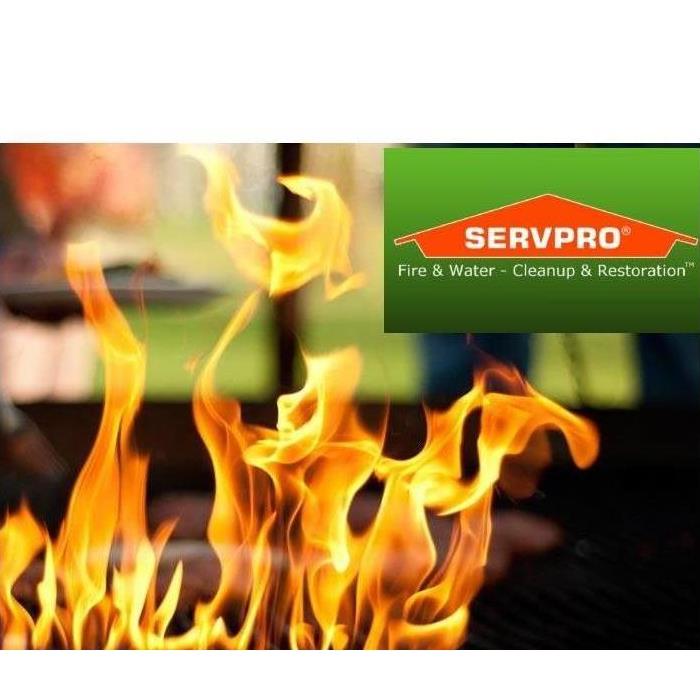 Did you know the majority of fires happen in the winter months?
Did you know the majority of fires happen in the winter months?
FIRE SAFETY TIPS FOR YOUR HOME
Many home fires can be avoided if proper fire prevention techniques are in place. In this article, we will discuss some fire safety steps to implement in your home and prevent the need for fire damage restoration.
1. The first thing that you need to do is educate yourself on the different types of smoke detectors that are on the market. There are two kinds of smoke detectors on the market, ionization and photoelectric. Ionization smoke detectors are best used for detecting the smoke that is given off from flaming fires where the photoelectric smoke detector is best for detecting the smoke particles given off from smoldering fires. The National Fire Protection Association will tell you that most deaths in home fires are due to smoke inhalation. However, since each alarm is equipped to detect different types of fires, and there is no way to determine which kind of fire will break out in a home, it is best to purchase both.
2. You need to have a fire extinguisher in your home. If a blaze does happen to break out in your home, you are probably going to evacuate and not attempt to battle the blaze, but that does not mean you should not keep a fire extinguisher in your home. The fire extinguisher is like a tool, you want to have it and better it just sits there, and you never have to use it than need it and not have it there when you need it. Sure, fire extinguishers are kind of unsightly, but if you are stuck in a fire and flames block the only exit, that fire extinguisher is going to be the best-looking thing you have ever seen!
3. Every home must have a fire evacuation plan, and you need to practice it a few times a year, especially if you have children. There is nothing more tragic than a family escaping a home fire only to have a member of the family-run back into a burning home because they think they are going to get someone who they believe to be still in there but is safely somewhere else. Make sure everyone in your family knows the evacuation plan from the home in the event of a fire and make sure everyone knows where the family is supposed to meet. Explain the value of staying at the meeting place and waiting there, and practice, practice, practice that plan.
If you are interested in learning more about fire damage restoration services call us at (617) 774-8583. SERVPRO of Milton/Braintree professionals are industry leaders in fire restoration services nationwide.
-Elias Urizar
Steps to Restore Fire and Smoke Damage
2/6/2020 (Permalink)
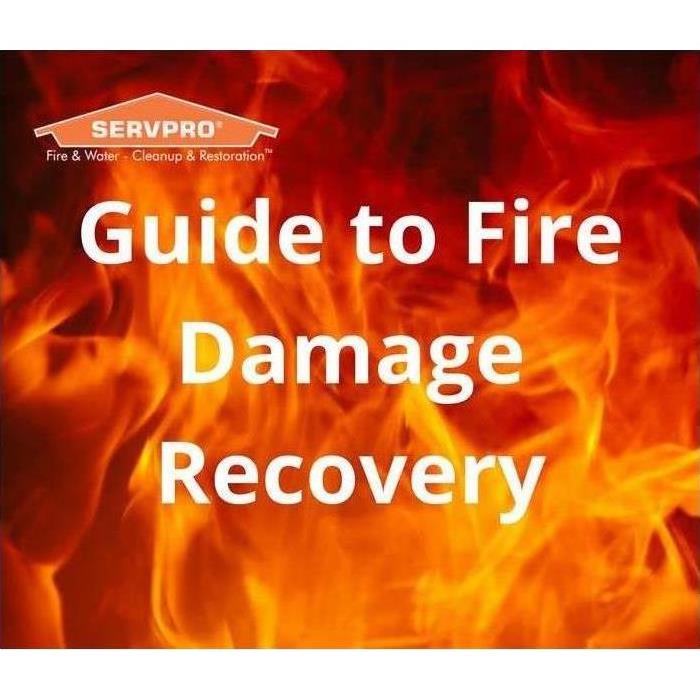 Recovering from fire damage can be overwhelming but with the help of SERVPRO of Milton/Braintree everything can go back to normal sooner than later.
Recovering from fire damage can be overwhelming but with the help of SERVPRO of Milton/Braintree everything can go back to normal sooner than later.
STEPS TO RESTORE FIRE AND SMOKE DAMAGE
Experiencing fire and smoke damage to your home is awful and traumatic. If you’re googling this out of necessity, I feel your pain. If you follow these steps, it’ll make your fire and smoke damage restoration processes as smooth as possible.
1. Contact SERVPRO of Milton/Braintree
Stop what you’re doing and call a fire restoration company such as SERVPRO of Milton/Braintree right away. The longer you wait after a fire and smoke event in your home, the worse the damage will get. Most companies will offer a free consultation or charge a small fee to come out and assess the damage. SERVPRO of Milton/Braintree will scope the job free of charge.
2. Emergency Tarping
The next step is putting a fire and smoke restoration plan in place and also tarping up any holes in your roof, windows, or walls. It is of paramount importance to form the plan for fire and smoke damage restoration as early as possible as well as doing what you can to stop the damage from becoming worse.
3. Removal of Fire and Smoke Damage
The third step is removing the damaged materials from your home. When there’s smoke damage, there is probably fire damage, and when the fire department is involved, things usually get wet. When cleaning up fire and smoke damage, it is common to discover some water damage. For this reason, it’s important to be very thorough when removing the damaged materials. The last thing you want after having a fire, smoke, and water restoration completed is to have to pay for a mold removal job a few months later!
4. Restoration of Your Home
The fourth and final step after everything has been cleaned and removed is rebuilding the space. Remodeling and restoring your home is the best part because you get to buy new things, well I guess it depends on how you look at it. Try to enjoy it cause you have to do it anyway, and if you have a good insurance adjuster, you will get a fair amount of money to replace all of your destroyed belongings.
If you have just experienced fire and smoke damage, call SERVPRO of Milton/Braintree at (617) 774-8583 for all fire, smoke, and water restoration needs. We are proud to serve Milton, Braintree, Avon, Randolph, Holbrook, Abington, Dorchester, Mattapan and the surrounding South Shore area.
-Elias Urizar
Fire Damage: What to Expect in the First 48 Hours
12/24/2019 (Permalink)
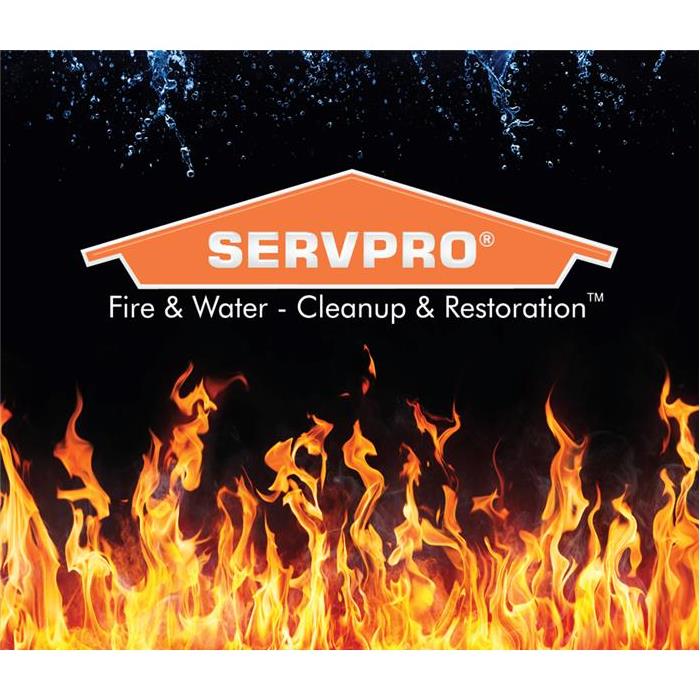 We are Faster to Any Size Disaster and will make it "Like it never even happened."
We are Faster to Any Size Disaster and will make it "Like it never even happened."
FIRE DAMAGE: WHAT TO EXPECT IN THE FIRST 48 HOURS
For any family living in South Shore, Massachusetts, a fire can be devastating. While many fires can cause mass destruction (or in some cases total destruction), other fires only cause minimal structural damage to a home. Fires do, however, fill up a house with a smoke smell and stains and fire, which can cause burn stains without contact. SERVPRO of Milton/Braintree can arrive on site and begin the process of cleaning up the mess. SERVPRO of Milton/Braintree can restore the inside and outside of the home by providing cosmetic cleanup services in a fraction of the time that a homeowner can perform the work. The key is to act fast and call SERVPRO of Milton/Braintree as soon as possible.
THE FIRST CALL YOU'LL MAKE: SERVPRO of Milton/Braintree
Although it's counter-intuitive to think that you'd call anyone before your insurance provider, the first phone call you'll make after a fire outside of your family is a restoration company such as SERVPRO of Milton/Braintree. We will perform an inspection for the purpose of confirming what the fire destroyed. We can also determine the scope and amount of destruction caused to the house.
When the insurance adjuster arrives to perform his or her inspection of the damage, SERVPRO of Milton/Braintree can confirm the amount of work that will be required to restore the house. Keep in mind, SERVPRO of Milton/Braintree's job is to be objective and represent the facts. By doing so, your chances of being compensated for damage is greater.
CALL SERVPRO of Milton/Braintree IMMEDIATELY:
One of the worst things you can do in the first 48 hours is to delay calling a restoration company. Fire, like water, can cause massive damage that only worsens the longer it goes without repair. Processing insurance payments and scheduling repairs can take time. So you need to act quickly in order to protect and restore your home. If a fire breaks out in the kitchen or bathroom, there can also be water damage from leaking pipes. Your ability to begin the process of restoration in a timely manner can save you more money in further damage caused by outside elements, mold, and pest invasion.
If you are looking for a property restoration company in the South Shore area or the surrounding area, then contact SERVPRO of Milton/Braintree at 617-774-8583 or message us at Elias@SERVPROmiltonbraintree.com. We offer comprehensive restoration and repair services for fire, water, storm, and mold damage.
Budget-Friendly Ways to Avoid a House Fire During the Holidays
12/24/2019 (Permalink)
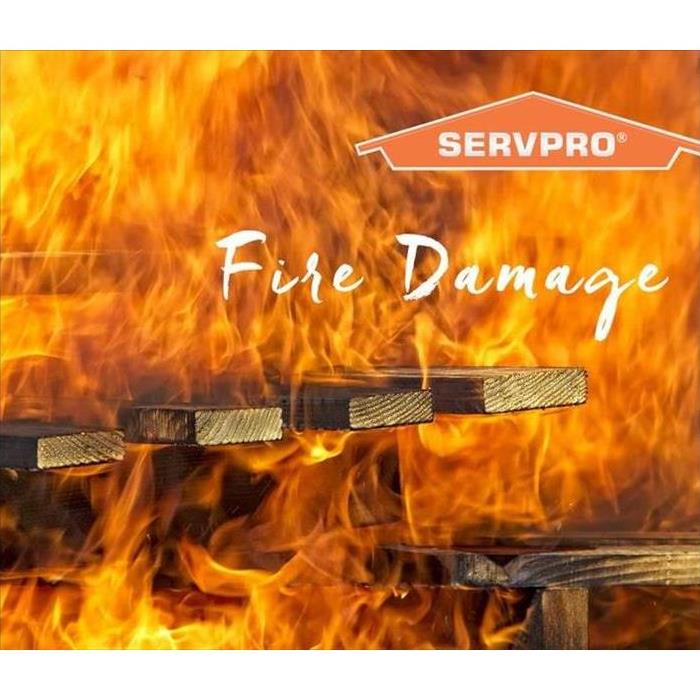 We Have Years of Experience in Fire Damage Restoration
We Have Years of Experience in Fire Damage Restoration
BUDGET-FRIENDLY WAYS TO AVOID A HOUSE FIRE DURING THE HOLIDAYS
House fires are common during the holiday months. A faulty holiday light or a burning candle could set your home ablaze and cause you to lose everything you've worked so hard to achieve. Fortunately, you can employ these budget-friendly tips to prevent a house fire that can ultimately save your home during the holidays.
USE LED CANDLES
Burning candles significantly improves your chances of experiencing a fire. You can easily knock over a candle and start a house fire. To completely reduce the chances of a home fire, don't use traditional candles. Many companies are manufacturing low-cost LED candles to prevent home fires. In addition to being safe, these candles are versatile. You can put them practically anywhere, including near electronics.
NEVER LEAVE YOUR HOLIDAY LIGHTS ON WHILE YOU'RE GONE
If you are like many homeowners, you put a lot of time and effort into decorating for the holidays. You may put lights around your home's trim, in the yard, and, of course, on your tree. Although lights look great and help set the tone for the holidays, your holiday lights could be the cause of a house fire. As such, you should never leave your home while your lights are on and never sleep with your lights on.
KEEP FIRE EXTINGUISHERS HANDY
If you don't have a fire extinguisher, now is the time to invest in one. There are many different types of fires, and, in some instances, water isn't useful to extinguish the flame. Fortunately, you can purchase different types of fire extinguishers. Armed with the right fire extinguisher, you can put out small fires that threaten your home.
WHAT TO DO FOLLOWING A FIRE
In the event of a fire, knowing what to do during the emergency can save your life and your home. If you can't extinguish the fire, contact emergency services by dialing 911 as soon as possible. After firefighters put the flames out and you are allowed to re-enter your home, you should recover everything you can, especially important papers. Make sure you have important documents, such as your home insurance policy and will.
After you've contacted your home insurance company, call our team SERVPRO of Milton/Braintree at 617-774-8583 to help you restore your home. We have years of experience in fire restoration. Our top priority is to get you back into you home, so we work diligently with your home insurance company to expedite the process. If you are in need of fire restoration, we encourage you to give us a call today.
Thanksgiving Safety Tips
11/21/2019 (Permalink)
 It is important to follow these safety tips to prevent any fire damage to your house.
It is important to follow these safety tips to prevent any fire damage to your house.
For most, the kitchen is the heart of the home, especially during the holidays. From testing family recipes to decorating cakes and cookies, everyone enjoys being part of the preparations.So keeping fire safety top of mind in the kitchen during this joyous but hectic time is important, especially when there’s a lot of activity and people at home. As you start preparing your holiday schedule and organizing that large family feast, remember, by following a few simple safety tips you can enjoy time with your loved ones and keep yourself and your family safer from fire.
Top 10 safety tips
- Stay in the kitchen when you are cooking on the stove top so you can keep an eye on the food.
- Stay in the home when cooking your turkey, and check on it frequently.
- Keep children away from the stove. The stove will be hot and kids should stay three feet away.
- Make sure kids stay away from hot food and liquids. The steam or splash from vegetables, gravy or coffee could cause serious burns.
- Keep knives out of the reach of children.
- Be sure electric cords from an electric knife, coffee maker, plate warmer or mixer are not dangling off the counter within easy reach of a child.
- Keep matches and utility lighters out of the reach of children — up high in a locked cabinet.
- Never leave children alone in room with a lit candle.
- Keep the floor clear so you don’t trip over kids, toys, pocketbooks or bags.
- Make sure your smoke alarms are working. Test them by pushing the test button.
Thanksgiving fire facts
- Thanksgiving is the peak day for home cooking fires, followed by Christmas Day, Christmas Eve, and the day before Thanksgiving.
- In 2017, U.S. fire departments responded to an estimated 1,600 home cooking fires on Thanksgiving, the peak day for such fires.
- Unattended cooking was by far the leading contributing factor in cooking fires and fire deaths.
- Cooking equipment was involved in almost half of all reported home fires and home fire injuries, and it is the second leading cause of home fire deaths.
Source: NFPA's Fire Applied Research Division
Practice Fireplace Safety This Winter
10/3/2019 (Permalink)
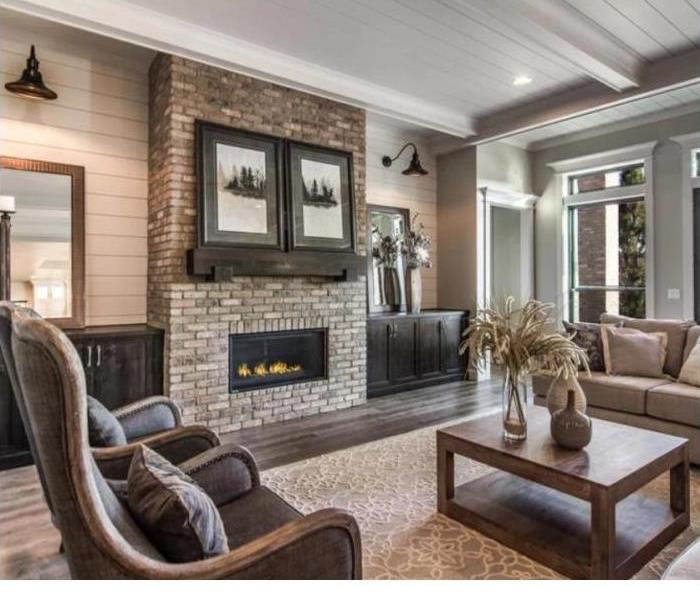 Fireplace safety in an elegant living room
Fireplace safety in an elegant living room
PRACTICE FIREPLACE SAFETY THIS WINTER<article1205">
As cold temperatures get settled in for a long winter’s nap, many of us start to settle in by our fireplace. Many people use their fireplaces frequently in the winter months and something about a fireplace can make a home feel so cozy. However, it is important to understand how to keep your home safe while using your fireplace.
DOUBLE CHECK SAFETY DEVICES
If you are planning to use your fireplace this winter, be sure to test your smoke alarms beforehand. If you don’t remember the last time you replaced the batteries, you should do so now. You should be confident that all of your alarms, including a carbon monoxide alarm, are working properly. You should also have a small fire extinguisher on hand in case of emergencies.
INSTALL SAFETY SCREENS
If you have young children, or you have young children visiting this holiday season, it is important to have a safety screen installed on your fireplace. Fire screens will keep little hands from reaching into the fire or getting too close to the actual fire itself. The materials surrounding your fireplace, such as glass or metal, can also get extremely hot and will stay hot for hours after the fire is out. Safety screens will also prevent embers from popping out of the fire and into a room, which is especially good if you might leave the room unattended.
KEEP AREA CLEAR
If you have a fireplace, you should make sure that the area surrounding your fireplace is cleared out. Many people are guilty of putting gifts around the fireplace to serve as a decoration. Other people often put their Christmas tree right next to their fireplace. You should never put a single thing in close proximity to your fireplace while it’s functioning. You should keep all things, from books, to decorations, to curtains, a safe distance away from your fireplace. Many common household items are flammable and the temperature of the fire itself could cause them to react.
Be safe this winter and if needed SERVPRO is one call away.
Teaching Fire Safety to Children
10/3/2019 (Permalink)
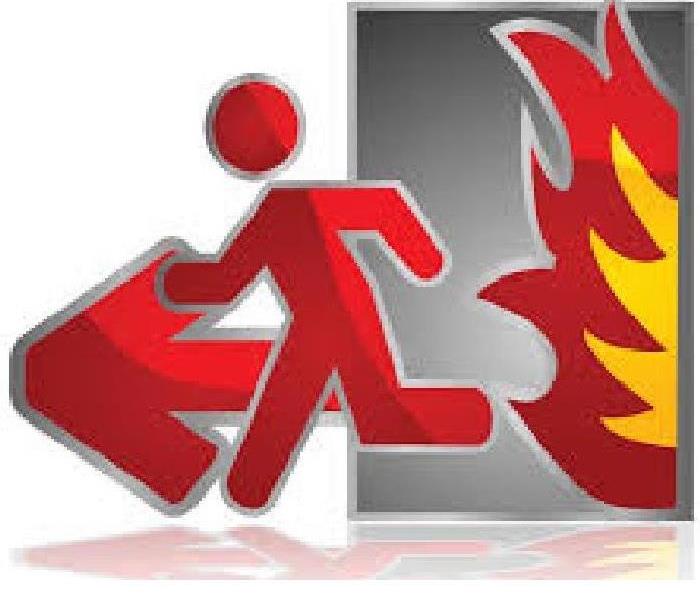 Always leave any area in fire immediately, do not hesitate or collect belongings. exit Immediately.
Always leave any area in fire immediately, do not hesitate or collect belongings. exit Immediately.
HOW TO TEACH CHILDREN FIRE SAFETY<article1211">
It is vital that you teach your children about fire safety at home. Your children should understand what to do in the event of a fire and how to protect themselves against a fire.
ESTABLISH AN ESCAPE ROUTE
In the event of a house fire, your family should have an established escape plan that you all understand. Your children should know how to get out of each room in your home and how to do so safely. You should establish a meeting point outside, far enough away from the house, so your children know where to meet you once they get outside.
FUNCTIONING WINDOWS
You should make sure that your windows can be easily opened by your child and that the screen can be removed easily. You should help your children practice opening and closing the windows in case they had to it by themselves in the event of a fire. Bedroom windows never should be sealed shut or incapable of opening. Many fires happen overnight and they may need that window to get out.
UNDERSTAND SMOKE DETECTORS
Your children should understand where your smoke detectors are in your home and how they work. They should be familiar with the sound the smoke detector makes so they can recognize it in the event that it is going off. As the adult, you need to ensure that batteries are regularly replaced and the detectors are tested.
CHECKING FOR SIGNS
You should teach your children how to check one side of a door to see if a fire could be burning on the other side. Children should understand how to feel for a fire through a door and be able to establish if there is one. You should also help children find alternative routes out of rooms if a fire is on the other side of their door, especially their bedroom.
STAYING OUTSIDE
Children need to understand that they should stay out of the burning house once they are safely outside. Many children want to run back inside for pets or toys because they don’t understand the danger of the fire inside. You should make it clear to children that they should not go back inside for absolutely anything once they are outside safely.
Ultimate Guide to fire Extinguishers in your Braintree Milton Office
10/1/2019 (Permalink)
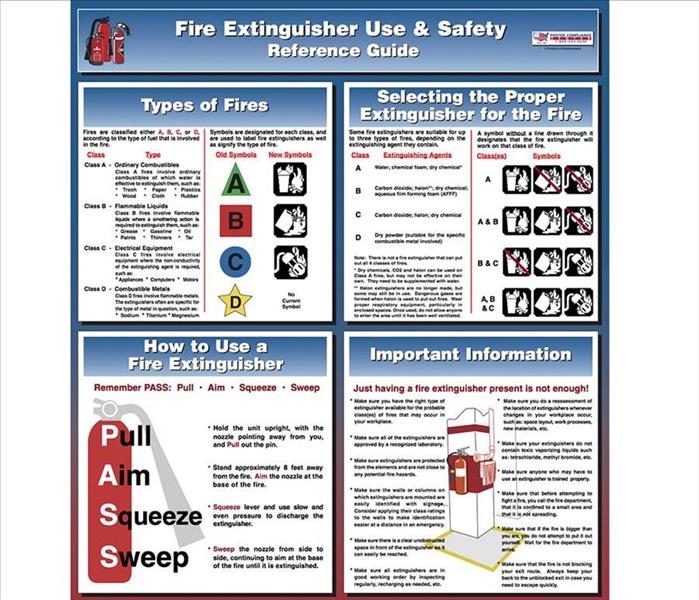 Chart summarizing fire extinguisher's blog
Chart summarizing fire extinguisher's blog
ABSOLUTELY EVERYTHING YOU NEED TO KNOW ABOUT OFFICE FIRE EXTINGUISHERS
Fire extinguishers are essential pieces of safety equipment in any office. However, not all fire extinguishers are the same, so what kind of extinguisher does your office building need? Each place a fire might occur requires an extinguisher specific to that location and potential class of fire. There’s a lot to know about choosing the right office fire extinguishers for your building’s needs, so be sure to make an informed choice to keep your property and your associates safe.
Identifing Office Fire Hazards
Fire extinguishers are designed to combat fires of different classes. Fire classes are determined by what fuels the fire, so you will need to assess your
environment for potential risks of each fire class.
For example, if you are in a design studio that houses large amounts of paint, a Class B fire (fire fueled by flammable liquid or gas) is a possibility. In
that case, a standard water extinguisher made for a Class A fire (fire fueled by paper, wood, straw, etc.) would not be suitable. You would need a foam
extinguisher made to fight Class B fires.
Reading up on fire classes and extinguishers can help you determine what fire classes are a risk in your office.
Determine Fire Extinguisher Size and Quantity Needed
How many extinguishers you need
and what size they should be is determined by the size of your space, level of hazard, and the recommendations of local and national fire codes. You will need to know the square
footage of your office area in order to purchase the correct number of extinguishers and situate them properly.
Select Appropriate Type of Office Fire Extinguisher
Each type of fire extinguisher is designed to put out a specific class of fire. Some extinguishers are made to fight more than one class of fire. This is why it is vital to assess the types of fires you could potentially face in your office environment. There are five main types of fire
extinguisher. Each is designed to cope with a specific fire hazard, but some are combination and can be used for more than one type of fire.
Water Fire Extinguishers
Water extinguishers
are used for Class A fires. Class A fires are fueled by ordinary combustibles such as paper, wood, fabric, trash, and plastics. Offices tend to have a lot
of Class A fire sources including paper recycling bins, wooden furniture, curtains, and carpets.
Foam Fire Extinguishers
While they are made to fight Class A fires, foam fire extinguishers can also be used against Class B fires. Class B fires involve flammable liquids and
gases, such as gas and paint. Class B fire sources are usually found in offices in the form of cleaner and furniture polish.
CO2 Fire Extinguishers
Carbon dioxide (CO2) fire extinguishers
are made to fight electrical fires (Class C) and Class B fires fueled by flammable liquids. Electrical fires are an obvious risk in the typical office
since sources can include computers, printers, photocopiers, speakers, and electric heaters.
Powder Fire Extinguishers
Fire extinguishers that emit powder are versatile. They can extinguish Class A, B, and C fires. This may be a good choice for an office environment
containing risks for all three fire types.
Wet Chemical Fire Extinguishers
Fires fueled by cooking oils and fat (i.e. build up in a grease catch), Class K fires, require a wet chemical fire extinguisher. Wet
chemical models are effective against Class A fires as well. These extinguishers are most often found in commercial kitchens where grease fires are more likely to occur.
The 3 most common types of fire extinguishers needed in an office are Water, CO2 & Foam.
Determine The Level of Fire Hazard
The fire hazard level of your building depends on the quantity and type of combustible materials housed there. This rating determines which kind of
extinguisher you need as well as how far apart they should be stored.
Light Fire Hazard
Most offices fall into this category. Light hazard spaces do not contain many combustible materials. Water and foam extinguishers designed to fight Class A
and B fires is the logical choice for this level of hazard. They should be stored no more than 75 feet apart.
Ordinary Fire Hazard I
Spaces at this level present more of a risk because they have a small quantity of flammable liquid on the premises and a greater amount of combustible materials (e.g. a laundromat). The greater risk of electrical fires in this environment may require CO2 extinguishers as well as water and foam extinguishers. Extinguishers here are stored every 75 feet.
Ordinary Fire Hazard II
These locations contain a considerable amount of flammable liquids without being high risk. Examples include manufacturing plants and hardware stores. Extinguishers capable of fighting a Class B flammable liquid fire (foam, CO2, or powder) should be stored every 30 to 50 feet.
Extra Fire Hazard
Facilities with printing presses, saw mills, or plastics processing equipment are at a high risk for fire. They should be equipped with large CO2 or powder extinguishers capable of fighting multiple types of fires. Extinguishers must be stored 30 to 50 feet apart.
Commercial Kitchens
The fats, oils, and open flames in a commercial kitchen present the greatest risk of fire. They also require wet chemical fire extinguishers capable of
putting out Class K fires. Because of the increased risk, commercial kitchens need to store fire extinguishers every 30 feet.
Store Fire Extinguishers Properly
Even in a low hazard environment, fire extinguishers should be stored nearest to the greatest fire risk. The required distance between
extinguishers takes into account how far an employee might be from reaching one. In an office, this means you will need to situate extinguishers no less than 75 feet apart and no further than 75 feet away from where employees work.
Fire extinguishers should be stored in wall cabinets or mounted on the appropriate brackets. The handle should be placed about 3.5 to 5 feet from the floor. Larger extinguishers may be placed with their handles about 3 feet from the floor. All portable fire extinguishers should be labeled as approved by a nationally recognized testing laboratory.
Fire Safety For Office Buildings
Once you determine which Office fire extinguishers you need, how many are required, and how they should be stored, be sure to train your employees on how to locate and use fire extinguishers. After all, what good is safety equipment if you don’t know how to use it? By having the right fire extinguishers on site ready for use, you ensure the safety of your building and its occupants.
The Fire Damage Restorations Process Steps
9/16/2019 (Permalink)
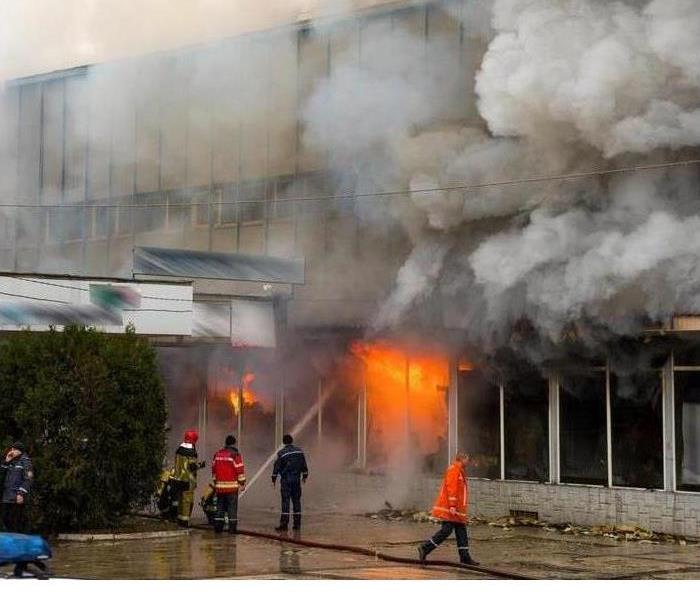 Dedicated Fire Dept. Working on a Commercial Fire
Dedicated Fire Dept. Working on a Commercial Fire
Step One: Emergency Contact
SERVPRO of Milton/Braintree offers emergency services meaning that we are able to come out quickly when contacted and provide immediate relief for your property. This is a very important feature and you should always look for companies like SERVPRO of Milton/Braintree that offer this when trying to find fire damage restoration.
Why do you need immediate service before you start the fire damage restoration process? Of course, it’s actually the job of the emergency services and fire department to put out the fires. However, you may still need fire damage restoration services very quickly in order to prevent damage from spreading through your property.
Say a fire burns a hole in your roof for instance. This could then lead to a situation where you have rain coming in through your ceiling and ruining your property more – the longer you leave this the more the extent of the damage is going to increase and thus you need to get immediate emergency services whenever possible rather than waiting for the problem to get more severe.
Step Two: Assessment
The next thing that SERVPRO of Milton/Braintree will do in the fire damage restoration process is to assess the extent of the damage in your property. This will usually involve looking at how far the fire, the smoke, and the soot have traveled as well as seeing how badly affected your walls and furniture have been.
This is an important first step as it is only by understanding the extent of the damage that SERVPRO of Milton/Braintree will be able to come up with a plan of action and to give you an accurate quote for how much it should cost and an accurate estimate of how long it will take.
Step Three: Tarp and Sealing Services
Once the fire damage restoration begins in earnest, the main priority will always be to prevent damage from getting worse. For instance then, if you have a leak thanks to a hole burned in your roof or due to a hole in your wall, then SERVPRO of Milton/Braintree will start by addressing that.
Likewise, fire damage restoration can also often go hand in hand with water damage restoration. This can be necessary for instance if the fire has led to a burst pipe or water tank. In these cases, SERVPRO of Milton/braintree will act quickly to stop the source of the water before it spreads through more of your building and causes more damage.
Step Four: Clean Up
Next, SERVPRO of Milton/Braintree will begin the clean-up part of the fire damage restoration process whereby they will clean away smoke, dust, and soot from your surfaces. After a fire often you will find that your property looks dark, stained and charred. The first job SERVPRO of Milton/Braintree will tackle will be to clean up all this damage and get your property at least looking as normal as possible.
This is also when water damage restoration will begin properly. Here any standing pools of water will be removed using submersible pumps and the areas will then be dried and sanitized. Water damage can also cause health problems owing to contamination in the water, so sanitization is particularly important here.
During this fire damage restoration process, SERVPRO of Milton/Braintree will also ensure to remove any odors that can linger after the smoke has been in the room. This might involve carpet cleaning as well and will often need to address adjacent rooms as well as those directly affected by fire damage.
Finally, the clean-up part of the fire damage restoration process will also involve the removal and disposal of items that are too badly damaged to be repairable. If you have furniture for instance that has absorbed a lot of contaminated water, or if you have carpet that has been badly burned… in these cases often the best case scenario is just to throw these things out and to replace them with new items. SERVPRO of Milton/braintree handles this for you so that you don’t have to.
Step Five: Repair and Renovation
The next stage is to begin actually restoring furniture and repairing the damage caused by fire. For instance, if cabinets have been destroyed by fire, then SERVPRO of Milton/Braintree will involve either repairing those cabinets or replacing them with new ones. Carpets can likewise be installed a new and walls can be repainted and wallpaper can be put back up.
The idea of this stage is to get your property looking as good as new so that you can go back to normal. However, SERVPRO of Milton/Braintree will go one step further than this. That’s because they will not only offer restoration but also renovation. These companies can then repair your property and actually leave it looking better than it did at the start. This can be something of a silver lining – if you’re stressed and upset because your furniture has been ruined, then SERVPRO of Milton/Braintree can turn this into an opportunity to renovate your property and to enjoy having a completely new redesign.
SERVPRO of Milton/Braintree 781-341-7007
Fire Hazards From Faulty Appliances On The Rise
3/11/2019 (Permalink)
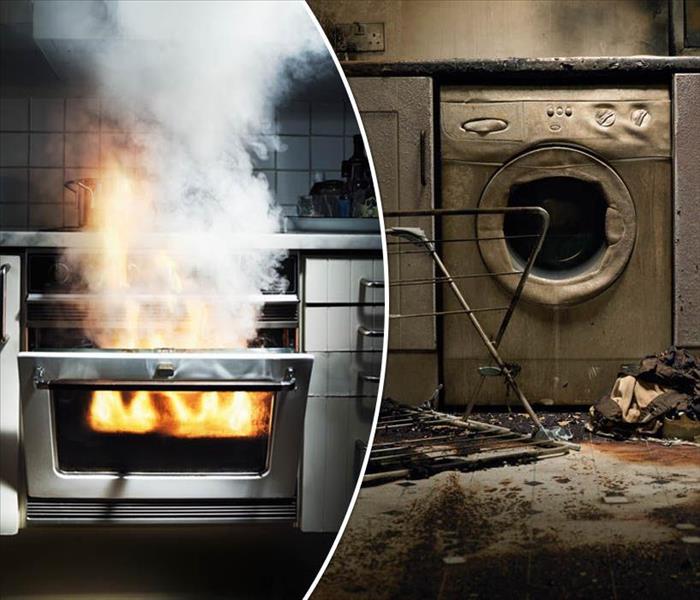 If you are experiencing fire or smoke damage resulting from an appliance or electrical malfunction, contact us 781-341-7007 today.
If you are experiencing fire or smoke damage resulting from an appliance or electrical malfunction, contact us 781-341-7007 today.
The number of fires caused each year from faulty appliances is on the rise.
Dryer Fires
Dryers are one of those appliances in your home where you “set it and forget it.” You throw your freshly washed clothes into the dryer from the washing machine, set the timer and then forget about it until the timer goes off 50 or 60 minutes later. However, did you know that by “setting and forgetting” about the clothes in your dryer, you could be putting your home at risk for a fire? According to the National Fire Protection Agency (NFPA), there are over 16,000 reported home fires each year resulting from a clothes dryer, with dust, lint or fiber igniting first in just under 30% dryer fires. If you haven’t cleaned your dryer in a while, performed routine maintenance or notice a crushed or broken exhaust vent, a dryer fire could be lurking in the shadows. SERVPRO of Milton/Braintree cleaning and restoration professionals have fire cleanup experience and can assist you in the event of a needed cleanup due to a dryer fire.
Oven Fires
The kitchen is the focal point in many homes throughout the South Shore. Family meals are prepared, holiday gatherings take place and family conversations that turn into memories are made in this one important room. While the kitchen is an essential location in everyone’s home, what happens when a fire erupts? Aside from stove and dishwasher fires, ovens can also burst into flames, and often happens as a result of an overflow of dessert batter, leaving the oven unattended for an extended period of time, splattering fat or grease or food scraps burning on the bottom of the oven. To assist in the prevention of an oven fire, always monitor the cooking food, use tin foil or a pan cover to conceal items that may splatter or boil over and routinely clean the oven and coils to prevent burning.
Microwave Fires And Smoke Damage
Similar to other appliances in your kitchen, microwaves can also start a fire when food items overheat, inappropriate items are placed in the microwave for heating, faulty wiring or when cleaning and routine maintenance has not been performed. Since microwaves use radiation to heat the placed items, it essential to follow the manufacturer’s directions when using the appliance and never attempting to heat an item that is not microwave-safe, such as metal objects, tin foil, or recycled paper. Routine cleaning and maintenance to ensure the appliance is running correctly and efficiently will also assist in the prevention of an unexpected microwave fire. SERVPRO of Milton/Braintree is an independently owned and operated business that is IICRC certified, and can assist in the cleanup process.
Other potential causes could be:
- Fire damage from overloaded electrical circuit
- Electrical fire from old wiring
What Is Fire Legal Liability?
2/19/2019 (Permalink)
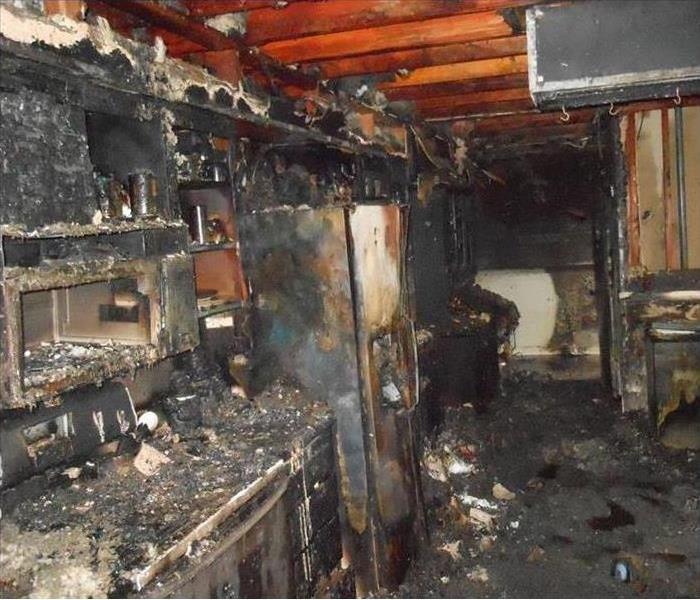 SERVPRO of Milton/Braintreeis here to help you 24/7/365 with any fire damage and restoration issue.
781-341-7007
SERVPRO of Milton/Braintreeis here to help you 24/7/365 with any fire damage and restoration issue.
781-341-7007
Fire damage liability is included in most commercial general liability policies.
It’s required in most cases. However, these policies only pay if the business is at fault for the damage.
Liability is a legal term used to describe responsibility. Here, liability refers to who will pay for fire damage.
There are limitations to fire legal liability coverage. Limitations may include low coverage limits; limited or no coverage for damaged property contents; or no coverage for auxiliary damages (e.g., water damage), which is common after a fire.
Lease agreements can stipulate that tenants are responsible for fire-related property damage regardless of how the fire damage occurs.
In cases were limitations apply, business owners could be on the hook for the total or remaining costs to repair damaged property.
Depending on your business and coverage needs, getting the right insurance can make all the difference after a major property disaster.
Find the Right Coverage
Fire damage legal liability is often overlooked in commercial general liability policies. Moreover, depending on how much space is rented (e.g., one office or an entire building) will help inform how much coverage is needed.
Businesses and individuals renting commercial space should purchase a general policy that covers liability due to any type of negligence that results in a fire or causes damage to another’s property.
Moreover, lease agreements should be reviewed carefully. The insurance clause defines the rights and obligations of each party and who purchases insurance, what coverage is required, financial limits, and so on.
How Can a Company like SERVPRO Help?
It’s in the best interest of a landlord or tenant to contact a professional restoration company after a fire.
First, fire damage leaves behind contaminants like soot and smoke smells, which can result in irritation or respiratory issues for some people. A fire damage repair company will have the tools and experience required to clean, sanitize, and rebuild damaged property to like-new condition.
Second, fire-damaged properties are easy targets for criminals. Security features are often damaged or destroyed, leaving a property vulnerable to vandalism and theft. If the property is dangerous and someone gets injured, property owners could face further legal problems.
Securing the property is faster and easier with a professional restoration team. They’ll board up entrance points, provide on-site power if needed, and erect temporary fencing to secure a perimeter.
Lastly, documentation is very important following property damage of any kind. Fire-damage experts work with insurance companies regularly and know what they’re looking for when compiling damage reports.
In some cases, the insurance company will pressure claimants to use an insurance-preferred vendor for cleanup and restoration.
However, these vendors don’t work for you, they work for the insurance company. This can be problematic after major fire damage.
By selecting your own restoration company, property owners can ensure they’re being represented fairly and accurately
Fires More Likely To Occur In Winter
2/4/2019 (Permalink)
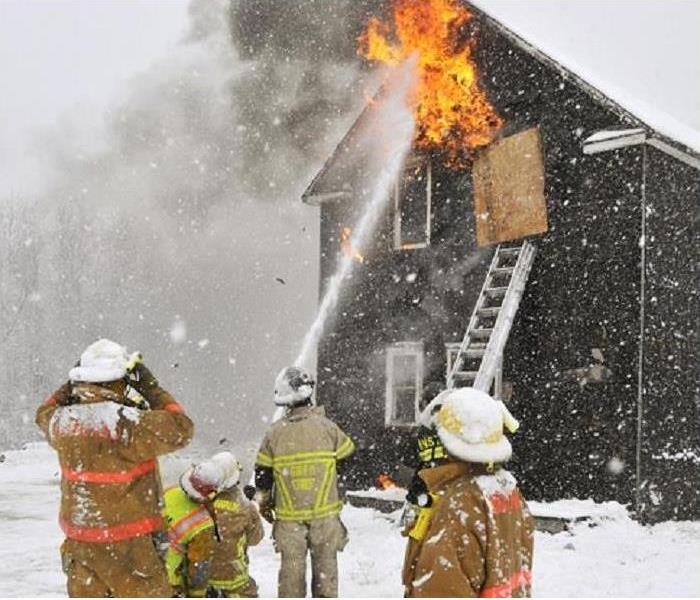 Fires can happen more frequently in winter, when they do call us fast
781-341-7007 SERVPRO of Milton/Braintree
Fires can happen more frequently in winter, when they do call us fast
781-341-7007 SERVPRO of Milton/Braintree
More fires occur during the winter months than any other time of the year
During the cold weather season, people seek extra ways to keep their home warm. Unfortunately, many alternative heating methods can also be fire hazards, especially when caution is not used.
To prevent fire damage during this cold weather season, here are four things to keep in mind:
Fireplaces and Wood Burning Stoves
Precautions you can take to keep your fireplace or wood burning stove safe:
- Shield the fireplace with a grate to prevent flying sparks from igniting in the room.
- Keep any flammable materials at least 4 feet away from the fire place.
- Perform regular maintenance and cleaning on your fireplace and/or wood burning stove.
- Be sure there are no cracks in your chimney and that the top is properly capped to keep out debris all year.
Space Heaters
Here are important rules to follow for safe space heater use:
- Use only space heaters with a “tip switch,” ones that shuts off automatically if tipped over.
- Be sure to follow the manufacturer’s safety instructions.
- Always keep a space heater at least 3 feet away from anything flammable.
- Ensure there is adequate ventilation and base/floor support in the areas where you will use a space heater.
Electric Blankets
Here is what you should know about electric blanket safety:
- Check for charred or frayed cords or any dark spots, these may indicate a potential problem with the electrical element.
- Do not allow anyone or anything on top of the blanket when it is in use, as this could lead to overheating.
- Do not fold or tuck in the blanket when it is in use, as this could also lead to overheating.
- An electric blanket should never be left unattended or used while one is sleeping.
Smoke Alarms
It is generally a good idea to regularly check smoke alarms each year. It is also wise to double-check the alarms before you start a fire or use a heating element.
Here at SERVPRO of Milton/Braintree we pride ourselves in being community leaders in both fire prevention and fire damage restoration. Our company is not only locally owned and operated, we’re also part of a nation-wide network of franchises with specialized Disaster Recovery Teams that handle fire catastrophes. We know how devastating a fire can be – and, unfortunately, the tips for prevention are often not talked about as much as they should be. We want to help change that.
Preventing a Fire
1/3/2019 (Permalink)
A structure fire is any fire that affects the structural components of a building. These fires are often responsible for large losses because they affect buildings that may be occupied and contain specialized equipment, stock, production materials, and other items that are critical to the function of a business. Developing an adequate fire protection plan for the structures on a commercial property means both taking the basic steps to prevent building fires—inside and out—and being proactive in maintaining the systems you’ve put in place. This might include…
- Developing appropriate emergency procedures. Although most businesses have developed fire safety plans, it is worth reviewing your emergency procedures from time to time. You should make sure to appoint a safety officer, post planned escape routes in visible areas, develop a plan for evacuating and accounting for employees, and develop a plan for working with emergency responders. In can also be helpful to have a plan in place for evaluating fire damage afterwards and preparing to submit an insurance claim.
- Keeping up with maintenance on machinery and appliances. Many fires are caused by equipment and machinery that is old, poorly repaired, dirty, or otherwise unmaintained or defective. Make sure that your commercial property is outfitted with up-to-date, working, and clean equipment. Schedule regular maintenance checks, and fix any problems quickly and carefully. Regularly evaluate aging or heavily used electronic equipment for potentially dangerous issues, like frayed cords or shorts.
- Limiting fire hazards. Fire hazards can exist inside a building or outside, and it’s up to you to reduce the risk. Maintain outdoor landscaping to leave a safe distance between organic material and outside walls. Store flammable materials appropriately, and keep escape routes clear. Identify potential hazards quickly, and review these hazards when there are significant changes to the property or its function.
- Maintaining safety equipment and systems. Even if you can’t prevent a fire, you can prevent it from spreading and causing structural damage. Keep your building’s sprinkler system and fire alarm system up to snuff. Equip the building with the right fire extinguishers and sprinkler networks for the job. Make sure these lifesaving systems are in working order at all times, and replace outdated safety equipment as soon as possible.
- Enforcing rules and regulations. None of these steps are likely to make a difference in your fire protection if you aren’t enforcing the rules or following through with maintenance. Make sure employees, building tenants, and others are informed about the rules for fire prevention and how to follow emergency procedures. Ensure that maintenance routines are performed and that potential safety issues and replacement needs are addressed in a timely manner.
- Contact SERVPRO of Milton/Braintree to create your Emergency Ready Profile. If a loss does occur call us at 781-341-7007 and we can make it "Like it never even happened."
Dryer Vent Fires, A Serious Situation
11/6/2018 (Permalink)
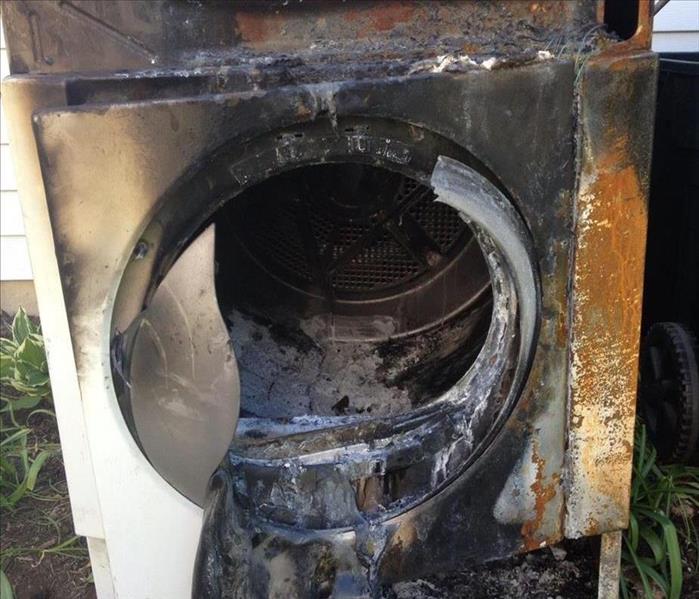 Be mindful about keeping your dryer vent clean
Call us in case of a fire loss
781-341-7007
Be mindful about keeping your dryer vent clean
Call us in case of a fire loss
781-341-7007
Dryer Vent Fires Are A Serious Problem.
According to the U.S. Consumer Product Safety Commission, the 1997 Residential Fire Loss estimates (latest information available) 16,700 residential fires originated from dryer vents. 30 deaths and $84 million in property damage resulted from these fires. The previously reported number from 1995 was 13,700. The number of residential fires attributed to dryer vents in on the increase.
Reasons for inspection and dryer vent cleaning:
Increased drying time? (jeans & towels)
Is the dryer operating hotter than normal?
Reduces chance of dryer vent fire. When the dryer is used, over time lint will collect and adhere to the inside of the dryer vent walls. The larger the buildup, the larger the risk of having a dryer vent fire.
Reduces "wasted electricity" and "appliance stress". Use of a dryer with a dirty vent can cause the dryer to run longer to dry the same amount of clothes because the hot air being expelled cannot freely exit the vent. Longer drying time takes more electricity and puts added stress on the appliance.
Metal connectors from the dryer to the wall are now standard requirements. Use of the "white plastic" types should be replaced due to their ability to melt in a fire. All connection pieces to the dryer vents should be inspected to make sure they are properly attached and up to the newer building code requirements (max 25' of pipe). Regular maintenance will keep the dryer vent clean and the dryer working properly.
Please take note of properly cleaning your dryer vent to prevent Dryer Vent Fires
In the case of a fire at your home or business, call SERVPRO of Milton/Braintree
781-341-7007
Holidays Are Coming, Learn How To Prevent Kitchen Fires
10/29/2018 (Permalink)
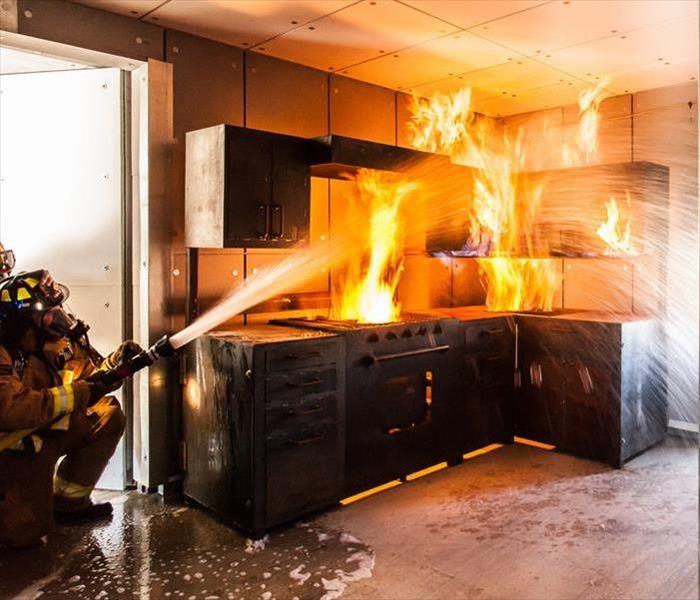 A kitchen fire can cause serious damage, learn about how to prevent for the upcoming season
781-341-7007
A kitchen fire can cause serious damage, learn about how to prevent for the upcoming season
781-341-7007
With the upcoming holiday season we want you to be safe as possible, here are tips on how to prevent kitchen fires...
1. Never putting metal in the microwave is something many people know and understand. But it's important to be aware of unexpected items that may contain metal too. In addition to utensils and aluminum foil, twist-tie wraps used to store food or bread can ignite in the microwave, according to Massachusetts' Public Fire Education Department.
2. When removing food or liquids from the microwave, use pot holders or gloves. Use extreme caution because even a minute or two in the microwave can make foods and cooking vessels much hotter than expected. Fires begin most often when what whatever is cooking gets too hot, according to the U.S. Fire Administration. That's why it is essential to always stay in the kitchen and keep an eye on what is cooking.
3. PAY ATTENTION TO THE PLACEMENT OF HANDLES.Enforcing a "3-foot child-free zone" around a stove is another top tip from the U.S. Fire Administration. This is smart to do with pets also.
4. ALWAYS UNPLUG APPLIANCES. Using deep fryers at home to make foods like deep-fried Thanksgiving turkey has become increasingly popular and increased the number of fires caused by the appliance, which peak on Thanksgiving Day, according to the USFA. In order to stay safe, the U.S. Department of Agriculture's food safety department has several pieces of advice. First of all, always read the manufacturer's manual for how to use the deep fryer and keep a fire extinguisher nearby. Before filling the fryer with oil, maker sure the appliance is turned off, wiped dry and not near any water. Never overcrowd the frying basket and do not touch it or add food while the basket is submerged. Again, never, ever leave it unattended. A deep fryer works very quickly and the potential for fire hazard increases when the food gets overcooked. A large pan lid, cookie sheet, baking soda and fire extinguisher should always be easy to get to in the kitchen. Rearrange things in the kitchen if necessary to have easy access to these items that can help stop a fire from spreading.
5. NEVER THROW WATER ON A GREASE OR ELECTRICAL FIRE.If any clothing catches fire, stop, drop and roll immediately to put out the flames. If any burns are apparent, follow the Center for Disease Control's guide for assessing and treating burns, and call 911 for help. No matter what, do not put butter or ointment on the burn.
If you do experience a fire loss, please note we are available 24/7 for emergency services and will get you and your house back to good as fast as possible
Fire Prevention Week October 7th-13th
10/8/2018 (Permalink)
About Fire Prevention Week
Since 1922, the NFPA has sponsored the public observance of Fire Prevention Week. In 1925, President Calvin Coolidge proclaimed Fire Prevention Week a national observance, making it the longest-running public health observance in our country. During Fire Prevention Week, children, adults, and teachers learn how to stay safe in case of a fire. Firefighters provide lifesaving public education in an effort to drastically decrease casualties caused by fires.
Fire Prevention Week is observed each year during the week of October 9th in commemoration of the Great Chicago Fire, which began on October 8, 1871, and caused devastating damage. This horrific conflagration killed more than 250 people, left 100,000 homeless, destroyed more than 17,400 structures, and burned more than 2,000 acres of land.
Importance of fire prevention
In a fire, mere seconds can mean the difference between a safe escape and a tragedy. Fire safety education isn’t just for school children. Teenagers, adults, and the elderly are also at risk in fires, making it important for every member of the community to take some time every October during Fire Prevention Week to make sure they understand how to stay safe in case of a fire.
Importance of fire prevention
In a fire, mere seconds can mean the difference between a safe escape and a tragedy. Fire safety education isn’t just for school children. Teenagers, adults, and the elderly are also at risk in fires, making it important for every member of the community to take some time every October during Fire Prevention Week to make sure they understand how to stay safe in case of a fire.
Bring awareness
While children under 5 and adults over 65 are at the highest risk for injury or death in a fire, people of all ages are vulnerable. In fact, the risk of a nonfatal fire injury is highest for those between 20 and 49, showing that fire safety education is essential for everyone. Additional risk factors include race, social-economic status, education level, and geographic location.
The purpose of Fire Prevention Week is to bring awareness to the risk of death in case of a fire and provide educational resources to people of all ages, races, and socioeconomic status in order to keep everyone safe.
The Damaging Effects from Smoke In Your Home
10/1/2018 (Permalink)
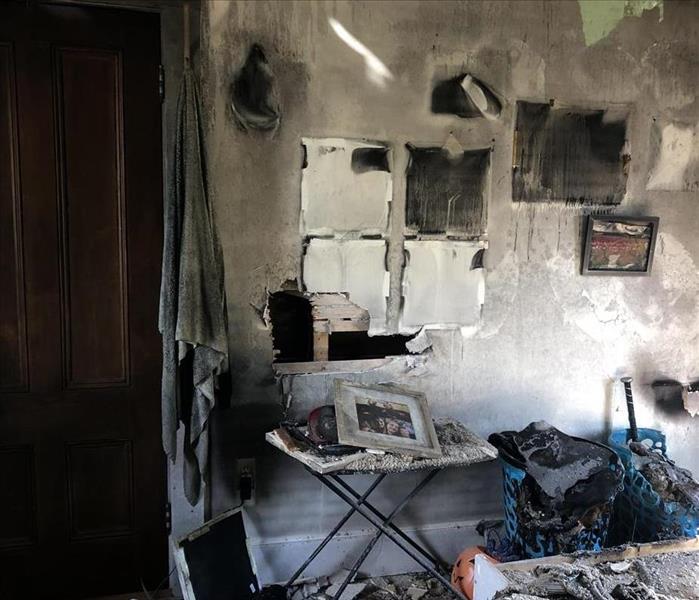 A fire in Holbrook caused by a child playing with matches. SERVPRO Milton/Braintree was there with the help they needed.
781-341-7007
A fire in Holbrook caused by a child playing with matches. SERVPRO Milton/Braintree was there with the help they needed.
781-341-7007
A house fire can be devastating and is something no homeowner wants to experience.
However, if a fire does occur in your home, we are are available to help you recover from the damage. It's important to know exactly how and where fire damage can impact your home before the clean up process begins, especially since some areas of your home may have smoke damage that's not visible.
Unexpected Issues from Fire and Smoke Damage
After a fire, it's usually evident what smoke damage looks like in your home - whether it's charred items, discolored walls, or ash and soot on the floor - but it can also produce smells and other side effects that are harmful to surfaces as well as your health. It's also important to note that some signs of smoke damage can occur immediately, while others are only apparent several hours - or even days - after the fire.
DISCOLORATION:
Shortly after a fire, the effects of smoke damage are visible on walls, ceilings and surfaces, appearing as stains and discoloration. Within a few days, walls and flooring may begin to turn yellow; however, this yellowing affect doesn't show right away. Plastic surfaces/appliances and wood can also become discolored and warped. Several hours after a fire, metal hardware can show signs of rust and corrosion. If you have counter-tops, tiles or other surfaces that contain porous stone such as marble, granite or travertine, they usually become permanently discolored from the acidic residue found in soot. This residue can also permanently tarnish metals.
ODOR:
Surfaces of your home, specifically fabric items, may not only show visible signs of fire damage, but also may contain a smoky odor. Smoke produces tiny particles of carbon in the air, and when deposited, these particles are called soot. Getting rid of the smoke residue, or soot, is the first step to reducing the smell of a fire.
Smoke is made up of several components, which contribute to the smell that lingers after fire damage.
- Particles - partially or completely burned substances that are sometimes toxic and can penetrate surfaces and fabrics.
- Vapors - misty, fog-like droplets that can be poisonous if inhaled or absorbed.
- Toxic gases - although it is odorless, carbon monoxide (CO), is the most common toxic gas that results from a fire. Phosgene is created when household products such as vinyl, plastics and other chemicals and solvents containing chlorine materials are burned. Hydrogen cyanide is a by-product from the combustion and burning of insulation, carpets, clothing, synthetics, and plastics, such as PVC pipe.
The smell of smoke gets trapped in clothing, carpets, drapes and upholstered furniture, and unless these items are properly cleaned and deodorized by a professional fire clean up service, they may retain the smoky smell for a long period of time. The source of the odor can oftentimes be difficult to pinpoint. It could be in the soot on a surface, in the pores of wood or saturated in the finish of a piece of furniture.
INTERIOR DAMAGE:
While smoke damage is visible on walls and ceilings, it can also permeate these surfaces and cause damage to a home's structure/framing, wall studs, insulation and air ducts in your ventilation system. When soot and smoke particles become trapped in the HVAC system, the smoke odor can reoccur periodically and even cause respiratory problems.
ELECTRICAL DAMAGE:
If any part of a home with wiring experiences fire damage, it usually means that the electrical system has been compromised, too. Depending on the source of the fire, any of the following electrical components may be damaged: wiring, cords, outlets, switches, fuses and breaker boxes. Appliances that have been affected by fire damage can show signs of corrosion, experience short circuits and malfunction, or fail completely.
No matter the level of destruction to your home, you should always consult licensed and trained industry professionals to access smoke or fire damage before you move forward with restoration and repairs.
CEILINGS:
Because hot air rises, the highest concentration of smoke residue is commonly found directly above where a fire started - usually on the ceiling above the point of origin. Nail heads in the ceiling (and walls) can also attract smoke particles, which appear as an outline of a ring around them.
CORNERS:
When smoke particles are ionized - or have an electrical charge - they are attracted to certain surfaces. Smoke produced by burning plastic carries a stronger charge than smoke from wood, paper or cotton. This causes smoke residue to form in clusters that look like cobwebs in the corners of rooms where walls and ceilings meet.
WALLS AND WINDOWS:
Windows and exterior walls are usually cooler than the center of a room and because smoke naturally travels to areas with a lower temperature, it's common to find a lot of smoke residue on outside walls and even in spaces behind drapes and blinds, even more so than surrounding surfaces.
Next Steps
Once you and your family are safe, you'll need to contact us to assess the damage and advise you on the type of service(s) you'll need to remove any smoke damage. It's highly advised to seek smoke damage restoration within a few days of the fire to minimize the amount of repairs your home will need.
What To Do After A Fire
8/24/2018 (Permalink)
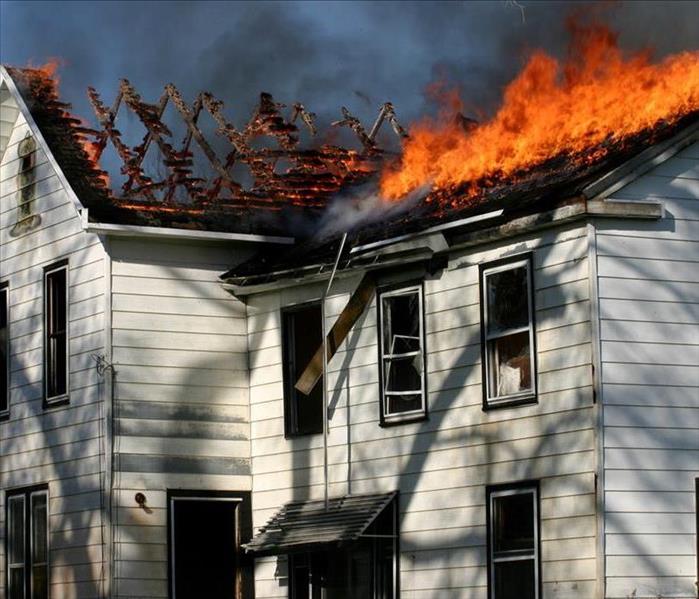 SERVPRO of Milton/Braintree 781-341-7007
Call us 24/7
SERVPRO of Milton/Braintree 781-341-7007
Call us 24/7
What is the first thing I should do after a home fire?
First and foremost, do not enter your home until you are given explicit permission from the fire department. Even if the cosmetic damage to your home is minimal, essential structures may have been compromised, and fires often re-ignite even after they appear to have been extinguished.
If this is the first resource you are consulting after a fire damaged your home, please contact your insurance company or agent immediately. Your insurance agent can advise you of the most important steps to take in the hours and days after the fire. These steps may include:
- Doing whatever is necessary to minimize damage to your home, including covering windows, doors, and other openings and pumping out water
- Possibly putting up a temporary fence around your property to prevent vandalism and theft
- Being certain not to turn on utilities until the fire department advises you that it is safe to do so
- Making a list of those items damaged by the fire, accompanied by what you paid for those items
- Locating temporary housing, whether you stay with friends or family or find an apartment complex that offers special rates for those displaced by disasters
- Hiring a professional home inspector to assess the structural damage to your home
It is very important to establish with your insurance agent what your policy does and does not cover. Some of the steps listed above can be very expensive; you will want to know whether your insurance company will cover some or all of these costs.
Call us SERVPRO of Milton/Braintree so we can come asses the damage and get started working with your Insurance Agency on how to move forward
We Can Help Rebuild Your Home After a Fire Loss
7/18/2018 (Permalink)
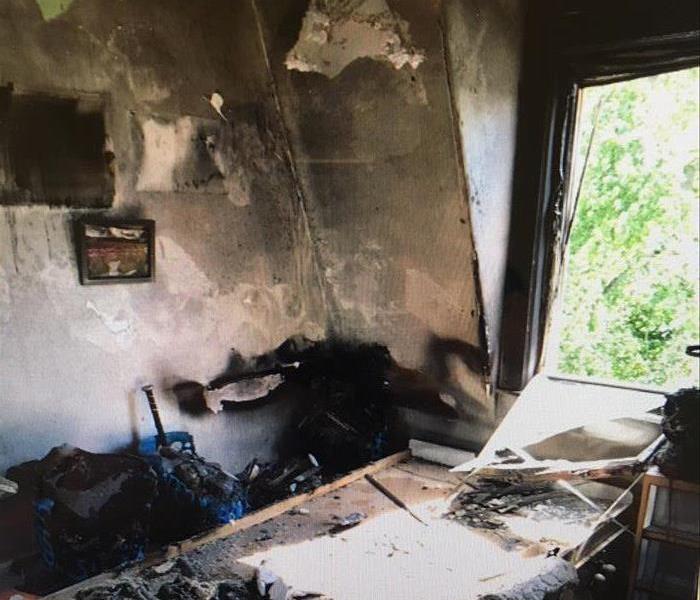 Fire damaged home in Holbrook, Ma
SERVPRO of Milton/Braintree was there with the help they needed
Fire damaged home in Holbrook, Ma
SERVPRO of Milton/Braintree was there with the help they needed
At SERVPRO of Milton/Braintree we want to help you get back to your life after a fire
A fire can break out in an instant. No matter how new or old your home is, there is always the risk of this nightmare becoming a reality. Many homeowners are completely unprepared for a blazing disaster, even though they know that fire damage can ruin valuable possessions and precious memories. Worse still, it can take lives.
So, how do you start rebuilding your life and home after such a disaster? The first thing not to do is enter your home without permission from the fire department – it is extremely dangerous, even if the damage is minimal. Structures might be compromised, and fires often re-ignite. The first thing to do is call your insurance company and a fire damage restoration company like us.
We will work with your insurance company and you to get you back to your life as quickly as possible. Offering reconstruction services at SERVPRO of Milton/Braintree means you can make one phone call and set your mind at ease that you will be taken care of every step of the way.
Call Us @ 781-341-7007
Removing and Storing the Contents of Your Home
11/6/2017 (Permalink)
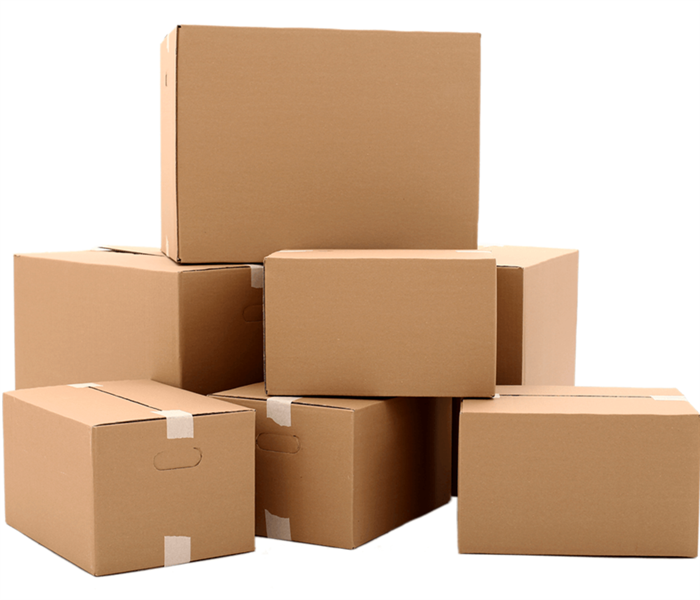 Many disaster situations require home and business content removal and relocation.
Many disaster situations require home and business content removal and relocation.
When your home or business is damaged, your first thoughts may not only be how to restore your home or business to its previous state, but how to clean and restore your belongings as well. If your home or business suffers storm, water, fire, smoke or mold damage, the cleanup and restoration experts at SERVPRO of Milton/Braintree are the premier choice for a full and thorough clean up and restoration of both the contents of your home or business as well as the structure itself.
Many disaster situations require home and business content removal and relocation for prompt and thorough cleaning and restoration. If a home suffers fire and smoke damage, for example, it is often easier, more secure, and cost-efficient to take certain contents to another location for restoration work. SERVPRO of Milton/Braintree provides complete content restoration as well as pack out services. We will carefully and respectfully take the contents of your home or business to be restored, packed, and delivered to an off-site facility. The pack-out process involves meticulous documentation to ensure your items receive the best possible care, including photo documentation, identification numbers and detailed lists. Call us to help you deal with removing and cataloguing your:
- Artwork
- Documents
- Books
- Photographs
- VHS and DVD media
- Clothing
- Electronics (televisions, computers, stereos, etc.)
- Furniture
- Rugs
- Retail Inventory
Storage
We use state of the art XactContents software to inventory and track your belongings at all stages of the pack out process. While at the SERVPRO of Milton/Braintree restoration facility, your items will be housed in a secure, climate-controlled environment. Your possessions will remain there until the cleaning and restoration process is complete.
Have storm, fire, mold or flood damage? Call SERVPRO of Milton / Braintree today at 781-341-7007!
Common Mistakes Homeowners Make After a Fire
10/27/2017 (Permalink)
A fire can be devastating for your home or business and getting started on the restoration process can be truly overwhelming. Your property may have suffered fire and smoke damage, as well as widespread water damage and flooding from firefighting efforts. With SERVPRO of Milton/Braintree's specialized fire and water damage restoration experience, we can help get your home or business cleaned up and restored to its pre-fire condition. We'll even remove the pervasive smoke odor and soot by deep cleaning your upholstery and carpet.
What NOT to do after a fire:
- Don't attempt to wash any walls or painted surfaces or shampoo carpet or upholstery without contacting a SERVPRO of Milton/Braintree Professional.
- Don't attempt to clean any electrical appliances that may have been close to fire, heat, or water without consulting an authorized repair service.
- Don't use any canned or packaged food or beverages that may have been stored near the fire, heat, or water.
- Don't turn on ceiling fixtures if the ceiling is wet. The wiring may be damaged.
- Don't send garments to an ordinary dry cleaner. Improper cleaning may destroy your garments.
SERVPRO of Milton/Braintree has what it takes to restore your home back to preloss condition. Let us help you make it “Like It never even happened.” Call us at 781-341-7007.
What To Do After A Fire
10/6/2017 (Permalink)
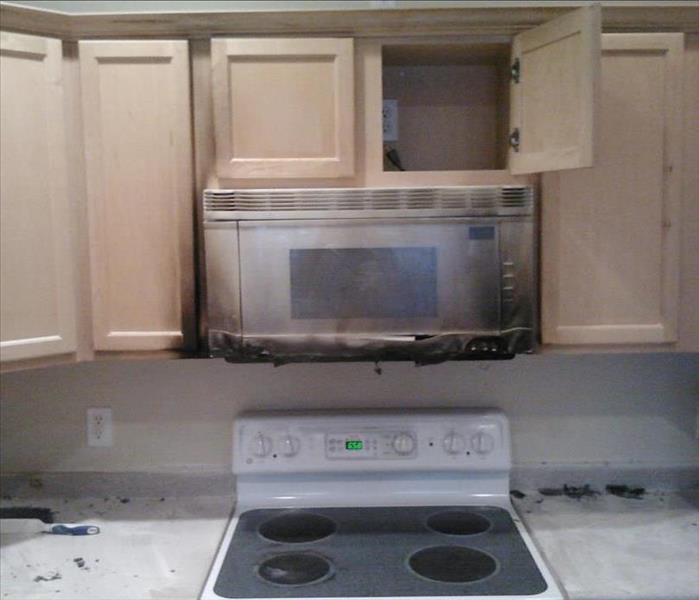 Before starting the cleanup process it's extremely helpful to know what type of fire damage has occurred.
Before starting the cleanup process it's extremely helpful to know what type of fire damage has occurred.
A fire can be devastating for your home or business and getting started on the restoration process can be truly overwhelming. Your property may have suffered fire and smoke damage, as well as widespread water damage and flooding from firefighting efforts. With SERVPRO of Milton/Braintree's specialized fire and water damage restoration experience, we can help get your home or business cleaned up and restored to its pre-fire condition. We'll even remove the pervasive smoke odor and soot by deep cleaning your upholstery and carpet.
What to do after a fire:
- Secure openings made to your property by firefighters using sturdy, durable materials designed to protect your home from both weather intrusion and intrusion by outsiders.
- Keep hands clean so as not to further soil upholstery, walls and woodwork.
- Place clean towels or old linens on rugs, upholstery and carpet traffic areas.
- If electricity is off, empty freezer and refrigerator and prop doors open.
- Clean and protect chrome with light coating of petroleum jelly or oil.
- Wash houseplants on both sides of leaves.
Determine the Type of Cleaning Needed
Before starting the cleanup process it's extremely helpful to know what type of fire damage has occurred. There are different types of fire, smoke, and soot and each requires a different clean up method to best restore your property. Prior to beginning the restoration process, our professional technicians will test the soot to help determine which type of smoke damage occurred and will design the clean-up procedure based on that information.
The Different Types of Fire/Smoke/Soot Can Include:
- Wet Smoke – Usually from Plastics and Synthetics
- Occurs from Low heat, smoldering, pungent odor, sticky, smeary.
- Dry Smoke – Produced from Paper and Wood
- Fast burning, high temperatures, dry, powdery, non-smeary residues.
- Protein Fire Residue – Produced by the evaporation of material rather than from a fire
- Virtually invisible, discolors paints and varnishes, extreme pungent odor.
- Fuel Oil Soot – Furnace Puff Backs
- Other Types – Tear gas, fingerprint powder and fire extinguisher residue.
SERVPRO of Milton/Braintree has what it takes to restore your home back to preloss condition. Let us help you make it “Like It never even happened”. Call us at 781-341-7007.
Facts About Smoke & Soot
9/29/2017 (Permalink)
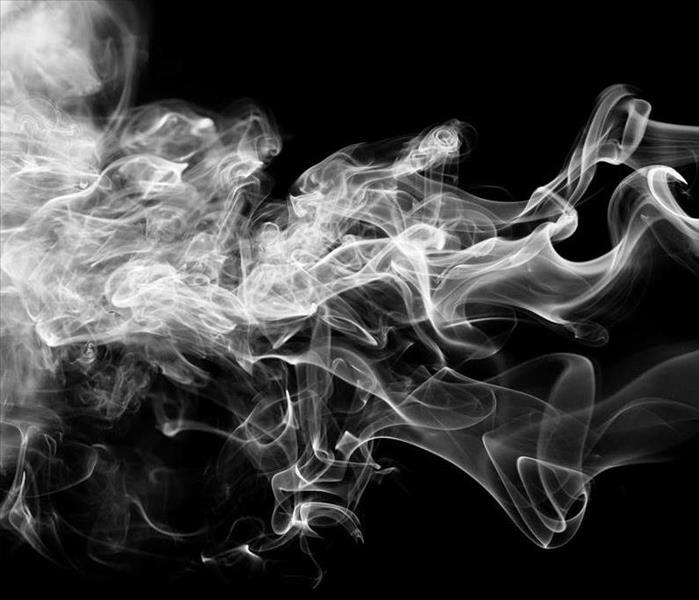 Understanding the different types smoke can help us determine the best course of action for your property.
Understanding the different types smoke can help us determine the best course of action for your property.
Different Types of Smoke
Understanding the different types smoke can help us determine the best course of action for your property. There are two different types of smoke – wet and dry. As a result, different types of soot residue are left after a fire. SERVPRO of Milton/Braintree will always test the soot to help determine the type of smoke damage that has occurred prior to beginning the restoration process. Our pretesting will help us identify the type of cleaning process to best restore your home.
Smoke and soot facts:
- Hot smoke migrates to cooler areas and upper levels of a structure.
- Smoke flows around plumbing systems, seeping through the holes used by pipes to go from floor to floor.
- The type of smoke may greatly affect the restoration process.
- Wet Smoke caused by burning plastic and rubber has a pungent odor, is sticky or smeary, and smoke webs will be more difficult to clean.
- Dry Smoke caused by burning paper or wood results from fast burning fire with higher temperatures. The smoke damage will occur on higher areas.
- Protein Fire Residue produced by the evaporation of material rather than from a fire is virtually invisible, can discolor paints and varnishes, and has an extreme pungent odor.
Have Questions about Fire, Smoke, or Soot Damage? Call Us Today – 781-341-7007
Call SERVPRO of Milton / Braintree for Professional Soot Damage Cleanup
9/22/2017 (Permalink)
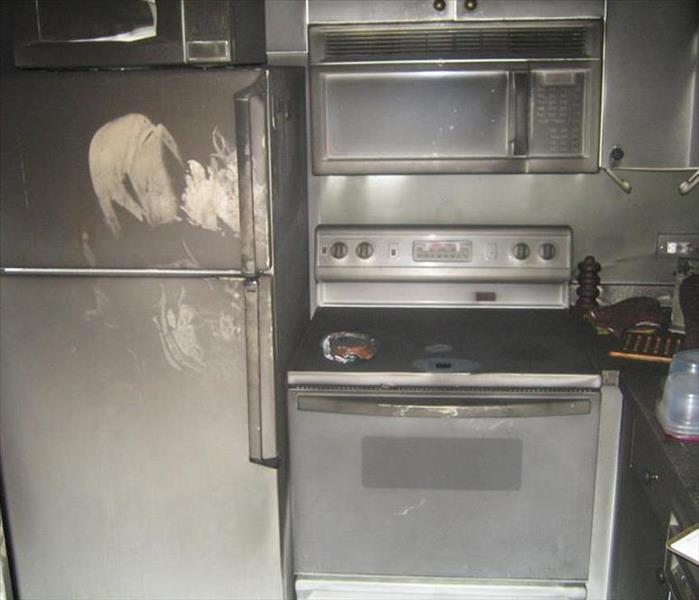 Damage from a furnace puff back can leave your home and its belongings covered in fine soot particles.
Damage from a furnace puff back can leave your home and its belongings covered in fine soot particles.
Damage from a furnace puff back can leave your home and its belongings covered in fine soot particles. Depending on the severity of the puff back, the distribution of oil based soot and smoke throughout your home can be extensive. Thankfully, most puff back cleanups are covered by insurance as they require a professional for the cleanup process. The process for cleaning up this type of damage requires specialized techniques and equipment, but in addition, the soot and particles floating through the air and onto surfaces creates an unhealthy environment especially for young children and elderly relatives. Call SERVPRO of Milton/Braintree so we can help you quickly and safely restore your home.
While You Wait for Help to Arrive:
- Limit movement in the home to prevent soot particles from spreading and additional damage from occurring.
- Place clean towels or old linens on rugs and high traffic areas and upholstery.
- Coat chrome faucets, trim and appliances with petroleum jelly or oil.
- Do not wash any walls or painted surfaces.
- Do not shampoo carpet or upholstery.
- Do not clean any electrical equipment.
- Do not send clothing to a dry cleaner since improper cleaning may set smoke odor.
Don't risk causing any further damage to your home or belongings by attempting to clean up the damage yourself. Call the fire damage cleanup and restoration professionals at SERVPRO of Milton/Braintree at 781-341-7007. We are available 24 hours per day, 7 days a week and can restore your home so it looks “Like It Never Even Happened”.
Things to Remember If A Puffback Happens
9/17/2017 (Permalink)
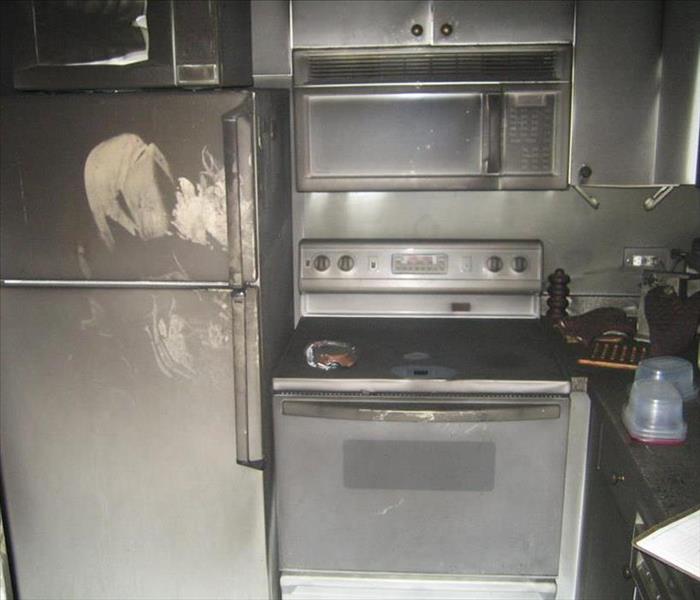 Contact SERVPRO of Milton/Braintree to help you restore your property in the event of a furnace puff back.
Contact SERVPRO of Milton/Braintree to help you restore your property in the event of a furnace puff back.
As we move further into fall and edge closer to winter, the desire to start nudging up the dial on the thermostat grows increasingly strong. While the first time we turn the heat on may fully signal the end of a season, for those with a poorly maintained furnace, it can call attention to a bigger problem resulting in a furnace “puff back” and a house covered in soot and smoke.
- Furnace Puff Backs require professionals to restore your home
- Most Puff Back cleanups are covered by insurance
- After a puff back, limit movement in the home to prevent soot particles from becoming embedded in upholstery and carpets
- Keep hands clean so as not to further spoil upholstery, walls, and woodwork.
- Place clean towels or old linen on rugs, upholstery, and carpets
- Clean and protect chrome with a light coating of petroleum jelly or oil
- Tape double layers of cheesecloth over air registers
- Throw away all exposed food
- Make sure a repairman is hired to repair the malfunctioning furnace
- Don't attempt to wash any walls or surface yourself
- Don't turn on ceiling fans or increase air circulation as this will only spread soot around
- Don't send garments to an ordinary dry cleaner. Improper cleaning may cause the smoke odor to set.
- Do call SERVPRO of Milton/Braintree at 781-341-7007
Contact SERVPRO of Milton/Braintree to help you restore your property in the event of a furnace puff back. Our smoke and fire damage specialists have the equipment and training to quickly return your home to a safe, clean, and comfortable environment for you and your family. We're faster to any disaster and are dedicated to responding immediately so that you can recover quickly, with less disruption to your life.
How Does a Furnace Puff Back Occur?
9/8/2017 (Permalink)
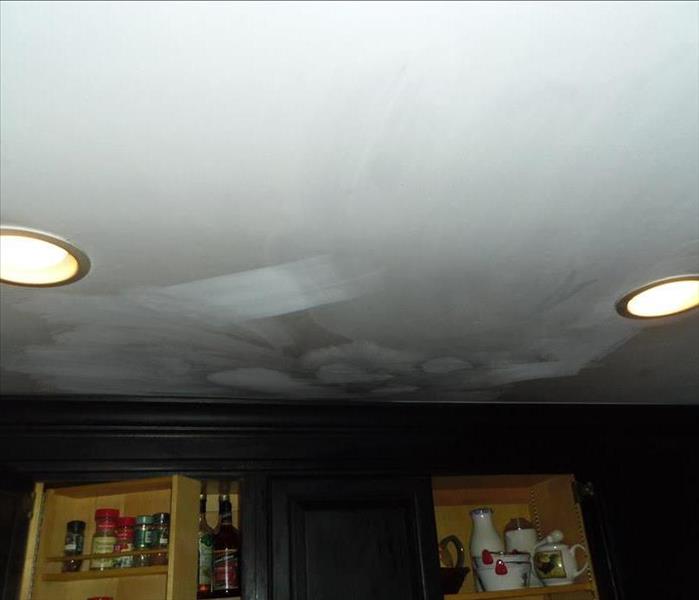 A misfiring furnace can cause a puff back that can send soot throughout your home.
A misfiring furnace can cause a puff back that can send soot throughout your home.
A misfiring in the furnace causes a puff back that can send soot throughout your home. When an oil burner doesn't immediately ignite, and oil fumes are allowed to build up before ignition, a small explosion can occur – similar to a backfiring of a car. Furnace puff backs can also result from a buildup of debris in your furnace that create an excessive explosion when the furnace is ignited. In both scenarios, the explosion shoots debris through the furnace's exhaust system and into your home. For homes with a forced hot air system, the damage can be much more extensive since the ducts will help spread the soot as easily as they spread heat throughout your home. In addition to the damage caused to your home by a puff back, it's also a sign of a problem in your heating system which will need to be repaired to prevent any further misfirings.
Contact SERVPRO of Milton/Braintree at 781-341-7007 to help you restore your property in the event of a furnace puff back. Our smoke and fire damage specialists have the equipment and training to quickly return your home to a safe, clean, and comfortable environment for you and your family. We're faster to any disaster and are dedicated to responding immediately so that you can recover quickly, with less disruption to your life.
Dryer Vent Fires – Signs That It Is Time to Clean Your Vents
8/18/2017 (Permalink)
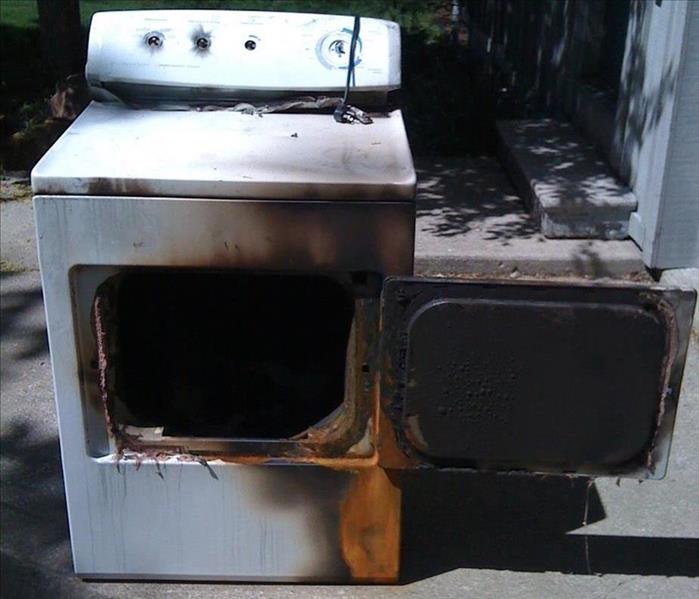 According to the U.S. Consumer Product Safety Commission, more than 15,000 fires are sparked every year by clothes dryers.
According to the U.S. Consumer Product Safety Commission, more than 15,000 fires are sparked every year by clothes dryers.
According to the U.S. Consumer Product Safety Commission, more than 15,000 fires are sparked every year by clothes dryers. Lint and other debris can build up in your dryer vent, reducing air flow to the dryer, backing up dryer exhaust gases, creating a fire hazard.
Here are some of the signs that it's time to clean your vent:
- Clothing does not dry completely after a normal drying cycle.
- Drying time for clothing takes longer than 35 to 40 minutes in duration.
- A musty odor is noticed in the clothing following the drying cycle.
- Clothing seems unusually hot to the touch after a complete drying cycle.
- The dryer vent hood flap does not properly open as it is designed to do during the operation of the dryer.
- Debris is noticed within the outside dryer vent opening.
- Excessive heat is noticed within the room in which the dryer is being operated.
- Large amounts of lint accumulate in the lint trap for the dryer during operation.
- A visible sign of lint and debris is noticed around the lint filter for the dryer.
- Excessive odor is noticed from dryer sheets that are used during the drying cycle.
For vent cleaning or fire clean up, please call SERVPRO of Milton / Braintree at 781-341-7007
SERVPRO of Milton / Braintree Specializes in Fire Damage Clean Up
7/31/2017 (Permalink)
Fire damage is never expected and can turn your world upside down. Here at SERVPRO of Milton/Braintree, we have fire and restoration trained professionals and resources to get you back on your feet in no time.
The process always begins with an evaluation of what items can and cannot be cleaned. We take great care to treat your fire damaged home and belongings with great care and use a multi-step cleaning process to salvage as many items as possible. We use both dry and wet methods of cleaning to achieve the best results. Dry methods of cleaning consist of dry sponging, HEPA-vacuuming and using a Masslinn dust cloth for cleaning delicate content. Our wet methods of cleaning consist of using both a cleaning agent and a deodorizer. The deodorizer has both a masking and a pairing agent. The pairing agent removes the odor and the masking agent leaves a refreshing smell. By using both of these fire restoration cleaning products, our process helps to eliminate both the dirt left behind from the fire as well as preventing any lingering smell from returning.
After a fire it's difficult to know what the first step should be to get back on your feet. SERVPRO of Milton/Braintree is here to help. Take a deep breath, and call us at (781) 341-7007. We work hard to restore your home to pre-fire condition so you can feel like it never even happened.
About SERVPRO of Milton / Braintree
SERVPRO of Milton/Braintree specializes in the cleanup and restoration of residential and commercial property after a fire, smoke, or water damage event. Our staff is highly trained in property damage restoration. From initial and ongoing training at SERVPRO’s corporate training facility, to regular IICRC-industry certification, you can rest assured our staff is equipped with the knowledge to restore your property.
Emergency Board-up Services
7/14/2017 (Permalink)
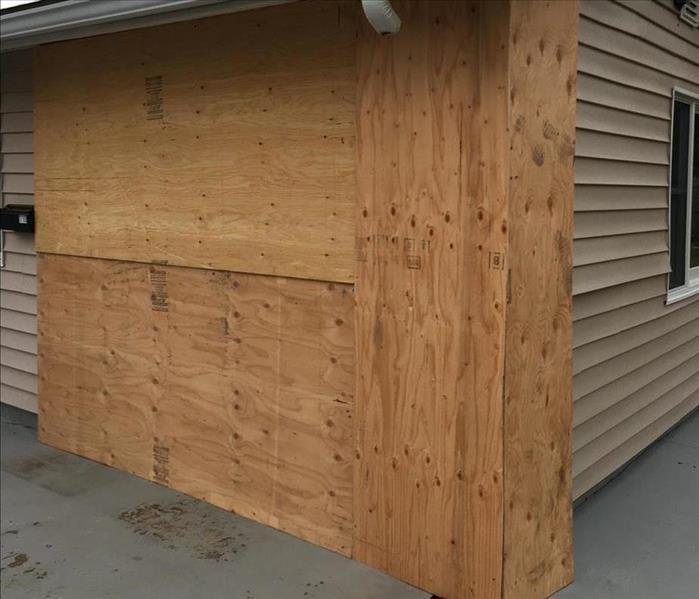 Protecting your family, possessions and business when damage occurs is our main priority.
Protecting your family, possessions and business when damage occurs is our main priority.
Available 365 days a year, 24-7, SERVPRO of Milton / Braintree provides a wide range of emergency services including board ups. We will arrive onsite within 1 - 2 hours to assess the damage and prevent further damage to your property.
Board Ups
Depending upon the extent and type of damage to your property, a board up may be necessary to secure your property to prevent vandalism, theft, trespassing and from weather elements.
Boarding your property will help minimize any further damage or destruction. If you have experienced fire, vandalism or storm damage that has exposed your house or business to potential theft, SERVPRO of Milton / Braintree can dispatch its’ board-up technicians to your location to make certain that your home or business remains secure.
Protecting your family, possessions and business when damage occurs is our main priority. Let the experienced SERVPRO of Milton / Braintree restoration team provide you with your board up and provide you with immediate security. We work with many of the insurance providers so you may not have to worry about coming up with funds or dealing with the insurance company.
Call SERVPRO of Milton / Braintree Today – 781-341-7007!
Different Types of Smoke Damage
5/29/2017 (Permalink)
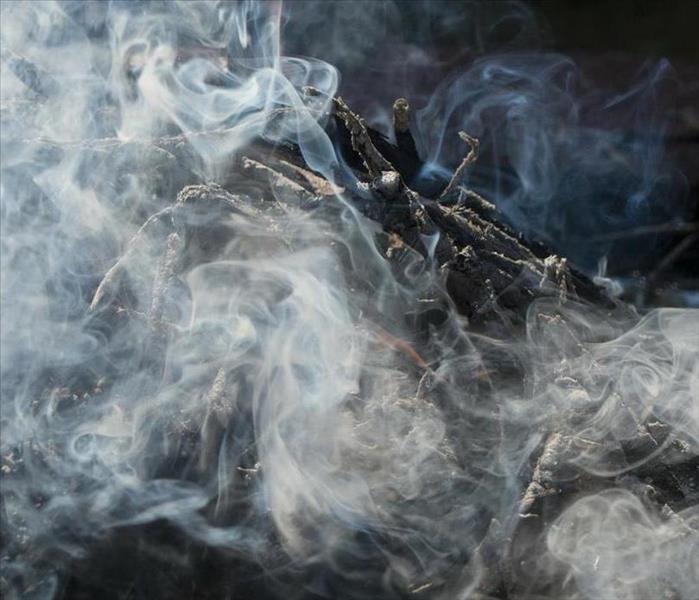 In a fire there can actually be a variety of different types of smoke that can be created and cause damages
In a fire there can actually be a variety of different types of smoke that can be created and cause damages
Types of Smoke:
- Wet Smoke (caused by plastics & rubber)
- Low heat, smoldering, pungent odor, sticky, smeary. Usually produces smoke webs that are more difficult to clean.
- Dry Smoke (caused by paper & wood)
- Fast burning, high temperatures, heat rises therefore the smoke rises.
- Protein Fire Residue (produced by evaporation of material, such as animal fat, rather than from a fire)
- Virtually invisible, discolors paints and varnishes, extreme pungent odor.
- Fuel Oil Soot (furnace puff backs)
- A “puff back” is a misfiring in the furnace that can send soot throughout your home, covering drapes, bedding, furniture, cabinets, walls, and everything in between. While “puff backs” can create havoc for the homeowner, SERVPRO of Milton / Braintree can, in most cases, restore the contents and structure quickly.
- Other Types (tear gas, fingerprint powder, and fire extinguisher residue)
SERVPRO of Milton / Braintree professionals are trained to handle your toughest losses.
Before you risk doing further damage by attempting to clean up the damage yourself, call the smoke damage cleanup and restoration professionals:
- SERVPRO of Milton / Braintree at 781-341-7007
- 24 hours per day / 7 days per week
SERVPRO of Milton / Braintreehas the equipment and experience to restore your smoke damaged home!
3/25/2017 (Permalink)
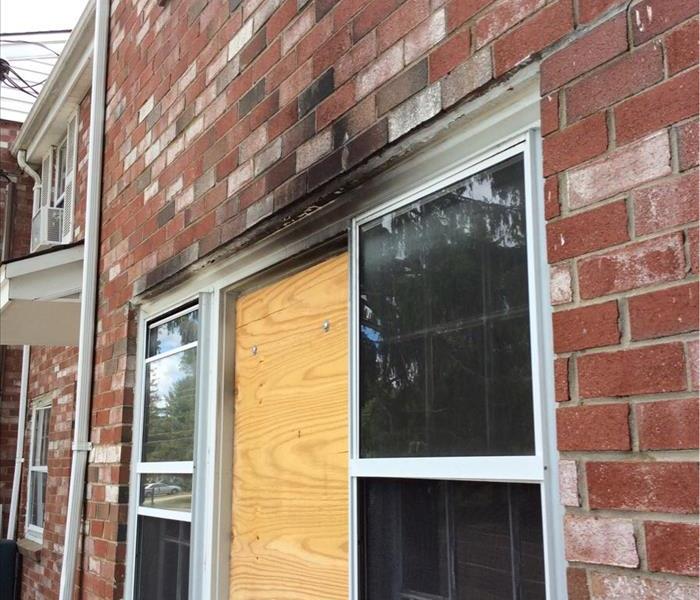 Since each smoke and fire damage situation is a little different, each one requires a unique solution tailored for the specific conditions.
Since each smoke and fire damage situation is a little different, each one requires a unique solution tailored for the specific conditions.
Smoke and soot is very invasive and can penetrate various cavities within your home, causing hidden damage and odor. Our smoke damage expertise and experience allows us to inspect and accurately assess the extent of the damage to develop a comprehensive plan of action.
Smoke and soot facts:
- Hot smoke migrates to cooler areas and upper levels of a structure.
- Smoke flows around plumbing systems, seeping through the holes used by pipes to go from floor to floor.
- The type of smoke may greatly affect the restoration process.
Different Types of Smoke
There are two different types of smoke–wet and dry. As a result, there are different types of soot residue after a fire. Before restoration begins, SERVPRO of Milton / Braintree will test the soot to determine which type of smoke damage occurred. The cleaning procedures will then be based on the information identified during pretesting. Here is some additional information:
Wet Smoke – Plastic and Rubber
- Low heat, smoldering, pungent odor, sticky, smeary. Smoke webs are more difficult to clean.
Dry Smoke – Paper and Wood
- Fast burning, high temperatures, heat rises therefore smoke rises.
Protein Fire Residue – Produced by evaporation of material rather than from a fire
- Virtually invisible, discolors paints and varnishes, extreme pungent odor.
Our Fire Damage Restoration Services
Since each smoke and fire damage situation is a little different, each one requires a unique solution tailored for the specific conditions. We have the equipment, expertise, and experience to restore your fire and smoke damage. We will also treat your family with empathy and respect and your property with care.
Have Questions about Fire, Smoke, or Soot Damage?
Call Us Today – 781-341-7007
SERVPRO of Milton / Braintreehas the equipment and experience to restore your smoke damaged home!
3/25/2017 (Permalink)
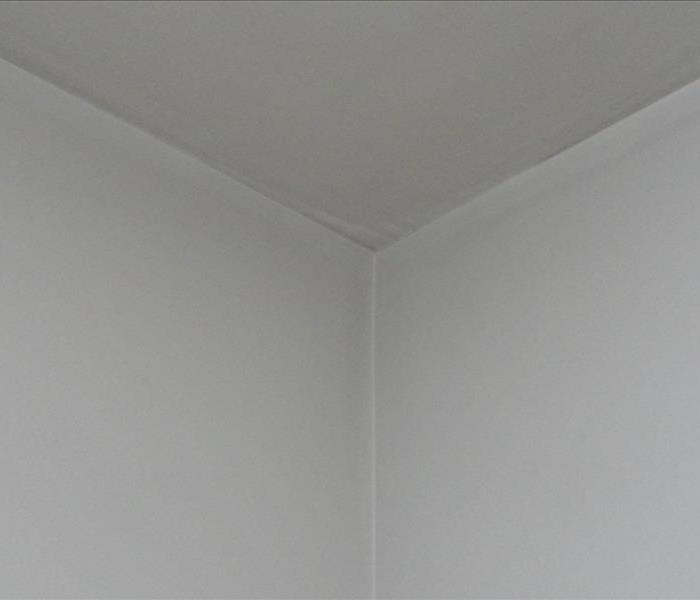 Since each smoke and fire damage situation is a little different, each one requires a unique solution tailored for the specific conditions.
Since each smoke and fire damage situation is a little different, each one requires a unique solution tailored for the specific conditions.
Smoke and soot is very invasive and can penetrate various cavities within your home, causing hidden damage and odor. Our smoke damage expertise and experience allows us to inspect and accurately assess the extent of the damage to develop a comprehensive plan of action.
Smoke and soot facts:
- Hot smoke migrates to cooler areas and upper levels of a structure.
- Smoke flows around plumbing systems, seeping through the holes used by pipes to go from floor to floor.
- The type of smoke may greatly affect the restoration process.
Different Types of Smoke
There are two different types of smoke–wet and dry. As a result, there are different types of soot residue after a fire. Before restoration begins, SERVPRO of Milton / Braintree will test the soot to determine which type of smoke damage occurred. The cleaning procedures will then be based on the information identified during pretesting. Here is some additional information:
Wet Smoke – Plastic and Rubber
- Low heat, smoldering, pungent odor, sticky, smeary. Smoke webs are more difficult to clean.
Dry Smoke – Paper and Wood
- Fast burning, high temperatures, heat rises therefore smoke rises.
Protein Fire Residue – Produced by evaporation of material rather than from a fire
- Virtually invisible, discolors paints and varnishes, extreme pungent odor.
Our Fire Damage Restoration Services
Since each smoke and fire damage situation is a little different, each one requires a unique solution tailored for the specific conditions. We have the equipment, expertise, and experience to restore your fire and smoke damage. We will also treat your family with empathy and respect and your property with care.
Have Questions about Fire, Smoke, or Soot Damage?
Call Us Today – 781-341-7007
SERVPRO of Milton / Braintreehas the equipment and experience to restore your smoke damaged home!
3/25/2017 (Permalink)
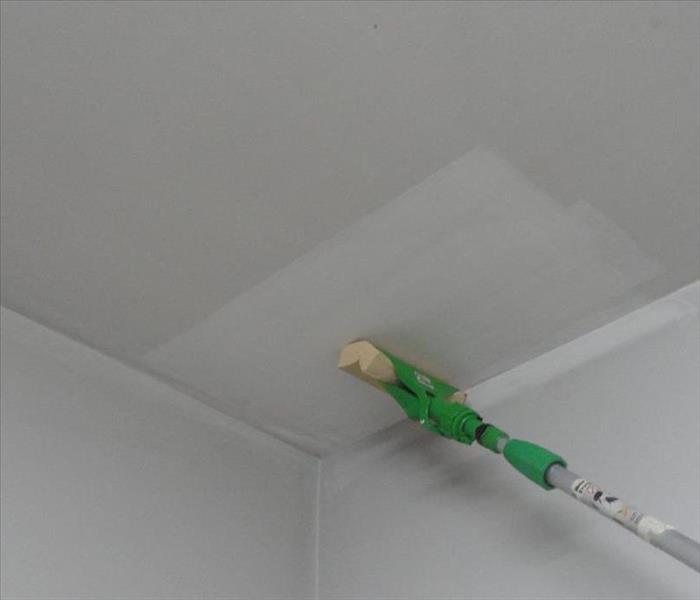 Since each smoke and fire damage situation is a little different, each one requires a unique solution tailored for the specific conditions.
Since each smoke and fire damage situation is a little different, each one requires a unique solution tailored for the specific conditions.
Smoke and soot is very invasive and can penetrate various cavities within your home, causing hidden damage and odor. Our smoke damage expertise and experience allows us to inspect and accurately assess the extent of the damage to develop a comprehensive plan of action.
Smoke and soot facts:
- Hot smoke migrates to cooler areas and upper levels of a structure.
- Smoke flows around plumbing systems, seeping through the holes used by pipes to go from floor to floor.
- The type of smoke may greatly affect the restoration process.
Different Types of Smoke
There are two different types of smoke–wet and dry. As a result, there are different types of soot residue after a fire. Before restoration begins, SERVPRO of Milton / Braintree will test the soot to determine which type of smoke damage occurred. The cleaning procedures will then be based on the information identified during pretesting. Here is some additional information:
Wet Smoke – Plastic and Rubber
- Low heat, smoldering, pungent odor, sticky, smeary. Smoke webs are more difficult to clean.
Dry Smoke – Paper and Wood
- Fast burning, high temperatures, heat rises therefore smoke rises.
Protein Fire Residue – Produced by evaporation of material rather than from a fire
- Virtually invisible, discolors paints and varnishes, extreme pungent odor.
Our Fire Damage Restoration Services
Since each smoke and fire damage situation is a little different, each one requires a unique solution tailored for the specific conditions. We have the equipment, expertise, and experience to restore your fire and smoke damage. We will also treat your family with empathy and respect and your property with care.
Have Questions about Fire, Smoke, or Soot Damage?
Call Us Today – 781-341-7007
What To Do After A Fire
2/9/2017 (Permalink)
A fire can be especially devastating to your home or business. After the fire trucks leave, your property will likely suffer from not only fire and smoke damage, but also widespread water damage and flooding from firefighting efforts. SERVPRO of Milton/Braintree has specialized fire and water damage restoration training and experience to quickly clean up and restore your home to pre-fire condition. They also can remove the pervasive smoke odor and deep-clean soot from upholstery and carpet.
Board-ups - In some cases firefighters may break windows and cut holes in the roof in order to vent the fire. It is extremely important to secure openings to your home or structure using sturdy, durable materials designed to protect it from both weather intrusion and intrusion by outsiders.
Types of Fire/Smoke/Soot
Wet Smoke – Plastics and Synthetics; Low heat, smoldering, pungent odor, sticky, smeary.
Dry Smoke – Paper and Wood; Fast burning, high temperatures, dry, powdery, non-smeary residues.
Protein – Virtually invisible, discolors paints and varnishes, extreme pungent odor.
Fuel Oil Soot – Furnace Puff Backs. Other Types – Tear gas, fingerprint powder and fire extinguisher residue.
What to do after a fire:
- Keep hands clean so as not to further soil upholstery, walls and woodwork.
- Place clean towels or old linens on rugs, upholstery and carpet traffic areas.
- If electricity is off, empty freezer and refrigerator and prop doors open.
- Clean and protect chrome with light coating of petroleum jelly or oil.
- Wash houseplants on both sides of leaves.
What NOT to do after a fire:
- Don't attempt to wash any walls or painted surfaces or shampoo carpet or upholstery without contacting SERVPRO of Milton/Braintree Professional.
- Don't attempt to clean any electrical appliances that may have been close to fire, heat or water without consulting an authorized repair service.
- Don't use any canned or packaged food or beverages that may have been stored near the fire, heat or water.
- Don't turn on ceiling fixtures if ceiling is wet. The wiring may be damaged.
- Don't send garments to an ordinary dry cleaner. Improper cleaning may
For fire remediation service, call SERVPRO of Milton / Braintree today – (781) 341-7007
SERVPRO of Milton/Braintree Specializes in Smoke and Soot Cleanup
10/22/2016 (Permalink)
Different Types of Smoke
Understanding the different types smoke can help us determine the best course of action for your property. There are two different types of smoke – wet and dry. As a result, different types of soot residue are left after a fire. SERVPRO of Milton/Braintree will always test the soot to help determine the type of smoke damage that has occurred prior to beginning the restoration process. Our pretesting will help us identify the type of cleaning process to best restore your home.
Smoke and soot facts:
- Hot smoke migrates to cooler areas and upper levels of a structure.
- Smoke flows around plumbing systems, seeping through the holes used by pipes to go from floor to floor.
- The type of smoke may greatly affect the restoration process.
- Wet Smoke caused by burning plastic and rubber has a pungent odor, is sticky or smeary, and smoke webs will be more difficult to clean.
- Dry Smoke caused by burning paper or wood results from fast burning fire with higher temperatures. The smoke damage will occur on higher areas.
- Protein Fire Residue produced by the evaporation of material rather than from a fire is virtually invisible, can discolor paints and varnishes, and has an extreme pungent odor.
Have Questions about Fire, Smoke, or Soot Damage? Call Us Today – 781-341-7007
The First Steps to Take After a Fire
10/17/2016 (Permalink)
A fire can be devastating for your home or business and getting started on the restoration process can be truly overwhelming. Your property may have suffered fire and smoke damage, as well as widespread water damage and flooding from firefighting efforts. With SERVPRO of Milton/Braintree's specialized fire and water damage restoration experience, we can help get your home or business cleaned up and restored to its pre-fire condition. We'll even remove the pervasive smoke odor and soot by deep cleaning your upholstery and carpet.
What to do after a fire:
- Secure openings made to your property by firefighters using sturdy, durable materials designed to protect your home from both weather intrusion and intrusion by outsiders.
- Keep hands clean so as not to further soil upholstery, walls and woodwork.
- Place clean towels or old linens on rugs, upholstery and carpet traffic areas.
- If electricity is off, empty freezer and refrigerator and prop doors open.
- Clean and protect chrome with light coating of petroleum jelly or oil.
- Wash houseplants on both sides of leaves.
What NOT to do after a fire:
- Don't attempt to wash any walls or painted surfaces or shampoo carpet or upholstery without contacting a SERVPRO of Milton/Braintree Professional.
- Don't attempt to clean any electrical appliances that may have been close to fire, heat, or water without consulting an authorized repair service.
- Don't use any canned or packaged food or beverages that may have been stored near the fire, heat, or water.
- Don't turn on ceiling fixtures if the ceiling is wet. The wiring may be damaged.
- Don't send garments to an ordinary dry cleaner. Improper cleaning may destroy your garments.
Determine the Type of Cleaning Needed
Before starting the cleanup process it's extremely helpful to know what type of fire damage has occurred. There are different types of fire, smoke, and soot and each requires a different clean up method to best restore your property. Prior to beginning the restoration process, our professional technicians will test the soot to help determine which type of smoke damage occurred and will design the clean up procedure based on that information.
The Different Types of Fire/Smoke/Soot Can Include:
- Wet Smoke – Usually from Plastics and Synthetics
- Occurs from Low heat, smoldering, pungent odor, sticky, smeary.
- Dry Smoke – Produced from Paper and Wood
- Fast burning, high temperatures, dry, powdery, non-smeary residues.
- Protein Fire Residue – Produced by the evaporation of material rather than from a fire
- Virtually invisible, discolors paints and varnishes, extreme pungent odor.
- Fuel Oil Soot – Furnace Puff Backs
- Other Types – Tear gas, fingerprint powder and fire extinguisher residue.
SERVPRO of Milton/Braintree has what it takes to restore your home back to pre-loss condition. Let us help you make it “Like It never even happened”.
Board-ups - In some cases firefighters may break windows and cut holes in the roof in order to vent the fire. It is extremely important to secure openings to your home or structure using sturdy, durable materials designed to protect it
What to Do in the Event of a Furnace Puff Back
10/11/2016 (Permalink)
Damage from a furnace puff back can leave your home and its belongings covered in fine soot particles. Depending on the severity of the puff back, the distribution of oil based soot and smoke throughout your home can be extensive. Thankfully, most puff back cleanups are covered by insurance as they require a professional for the cleanup process. The process for cleaning up this type of damage requires specialized techniques and equipment, but in addition, the soot and particles floating through the air and onto surfaces creates an unhealthy environment especially for young children and elderly relatives. Call SERVPRO of Milton/Braintree so we can help you quickly and safely restore your home.
While You Wait for Help to Arrive:
- Limit movement in the home to prevent soot particles from spreading and additional damage from occurring.
- Place clean towels or old linens on rugs and high traffic areas and upholstery.
- Coat chrome faucets, trim and appliances with petroleum jelly or oil.
- Do not wash any walls or painted surfaces.
- Do not shampoo carpet or upholstery.
- Do not clean any electrical equipment.
- Do not send clothing to a dry cleaner since improper cleaning may set smoke odor.
Don't risk causing any further damage to your home or belongings by attempting to clean up the damage yourself. Call the fire damage cleanup and restoration professionals at SERVPRO of Milton/Braintree at 781-341-7007. We are available 24 hours per day, 7 days a week and can restore your home so it looks “Like It Never Even Happened”.
Poorly Maintained Furnace? You're At Risk for a Puff Back
10/5/2016 (Permalink)
Poorly Maintained Furnace? You're At Risk for a Puff Back
As we move further into fall and edge closer to winter, the desire to start nudging up the dial on the thermostat grows increasingly strong. While the first time we turn the heat on may fully signal the end of a season, for those with a poorly maintained furnace, it can call attention to a bigger problem resulting in a furnace “puff back” and a house covered in soot and smoke.
How Does a Furnace Puff Back Occur?
A misfiring in the furnace causes a puff back that can send soot throughout your home. When an oil burner doesn't immediately ignite, and oil fumes are allowed to build up before ignition, a small explosion can occur – similar to a backfiring of a car. Furnace puff backs can also result from a buildup of debris in your furnace that create an excessive explosion when the furnace is ignited. In both scenarios, the explosion shoots debris through the furnace's exhaust system and into your home. For homes with a forced hot air system, the damage can be much more extensive since the ducts will help spread the soot as easily as they spread heat throughout your home. In addition to the damage caused to your home by a puff back, it's also a sign of a problem in your heating system which will need to be repaired to prevent any further misfirings.
Things to Remember
- Furnace Puff Backs require professionals to restore your home
- Most Puff Back cleanups are covered by insurance
- After a puff back, limit movement in the home to prevent soot particles from becoming embedded in upholstery and carpets
- Keep hands clean so as not to further spoil upholstery, walls, and woodwork.
- Place clean towels or old linen on rugs, upholstery, and carpets
- Clean and protect chrome with a light coating of petroleum jelly or oil
- Tape double layers of cheesecloth over air registers
- Throw away all exposed food
- Make sure a repairman is hired to repair the malfunctioning furnace
- Don't attempt to wash any walls or surface yourself
- Don't turn on ceiling fans or increase air circulation as this will only spread soot around
- Don't send garments to an ordinary dry cleaner. Improper cleaning may cause the smoke odor to set.
- Do call SERVPRO of Milton/Braintree at 781-341-7007
Contact SERVPRO of Milton/Braintree to help you restore your property in the event of a furnace puff back. Our smoke and fire damage specialists have the equipment and training to quickly return your home to a safe, clean, and comfortable environment for you and your family. We're faster to any disaster and are dedicated to responding immediately so that you can recover quickly, with less disruption to your life.
The Basics of Cleaning After a Fire Loss
8/12/2016 (Permalink)
Fire damage is never expected and can turn your world upside down. Here at SERVPRO of Milton/Braintree, we have fire and restoration trained professionals and resources to get you back on your feet in no time.
The process always begins with an evaluation of what items can and cannot be cleaned. We take great care to treat your fire damaged home and belongings with great care and use a multi-step cleaning process to salvage as many items as possible. We use both dry and wet methods of cleaning to achieve the best results. Dry methods of cleaning consist of dry sponging, HEPA-vacuuming and using a Masslinn dust cloth for cleaning delicate content. Our wet methods of cleaning consist of using both a cleaning agent and a deodorizer. The deodorizer has both a masking and a pairing agent. The pairing agent removes the odor and the masking agent leaves a refreshing smell. By using both of these fire restoration cleaning products, our process helps to eliminate both the dirt left behind from the fire as well as preventing any lingering smell from returning.
After a fire it's difficult to know what the first step should be to get back on your feet. SERVPRO of Milton/Braintree is here to help. Take a deep breath, and call us at (781) 341-7007. We work hard to restore your home to pre-fire condition so you can feel like it never even happened.
About SERVPRO of Milton / Braintree
SERVPRO of Milton/Braintree specializes in the cleanup and restoration of residential and commercial property after a fire, smoke, or water damage event. Our staff is highly trained in property damage restoration. From initial and ongoing training at SERVPRO’s corporate training facility, to regular IICRC-industry certification, you can rest assured our staff is equipped with the knowledge to restore your property.
Types of Smoke
4/23/2016 (Permalink)
Types of Smoke:
· Wet Smoke (caused by plastics & rubber)
o Low heat, smoldering, pungent odor, sticky, smeary. Usually produces smoke webs that are more difficult to clean.
· Dry Smoke (caused by paper & wood)
o Fast burning, high temperatures, heat rises therefore the smoke rises.
· Protein Fire Residue (produced by evaporation of material, such as animal fat, rather than from a fire)
o Virtually invisible, discolors paints and varnishes, extreme pungent odor.
· Fuel Oil Soot (furnace puff backs)
o A “puff back” is a misfiring in the furnace that can send soot throughout your home, covering drapes, bedding, furniture, cabinets, walls, and everything in between. While “puff backs” can create havoc for the homeowner, SERVPRO of Milton / Braintree can, in most cases, restore the contents and structure quickly.
· Other Types (tear gas, fingerprint powder, and fire extinguisher residue)
o SERVPRO of Milton / Braintree professionals are trained to handle your toughest losses.
Before you risk doing further damage by attempting to clean up the damage yourself, call the smoke damage cleanup and restoration professionals:
· SERVPRO of Milton / Braintree at 781-341-7007
· 24 hours per day / 7 days per week
SERVPRO of Milton / BraintreeSmoke and Soot Cleanup
4/20/2016 (Permalink)
Smoke and soot are extremely invasive and can penetrate various cavities within your home, causing unseen damage and odor. Our smoke damage expertise and experience allows us to inspect and assess the extent of the damage to develop a comprehensive plan of action for your home or business.
Smoke and soot facts:
- Hot smoke migrates to cooler areas and upper levels of a structure.
- Smoke flows around plumbing systems, seeping through the holes used by pipes to go from floor to floor.
- The type of smoke greatly affects the restoration process.
Different Types of Smoke
Did you know there are two different types of smoke? Wet and dry. Due to this, there are different types of soot residue after a fire. Before restoration begins, SERVPRO of Milton / Braintree tests the soot to determine which type of smoke damage occurred. The cleaning procedures will then be based on the information identified during testing.
Here is some additional information:
Wet Smoke – Plastic and Rubber
- Low heat, smoldering, pungent odor, sticky, and smeary. Smoke webs are more difficult to clean.
Dry Smoke – Paper and Wood
- Fast burning, high temperatures, heat rises and therefore smoke rises.
Protein Fire Residue – Produced by evaporation of material rather than from a fire
- Virtually invisible, it discolors paint and varnishes, in addition to an extreme, pungent odor.
Our Fire Damage Restoration Services
As each smoke and fire damage situation is unique, each one requires a different solution tailored to the specific conditions. Our team has the equipment, knowledge, and experience to restore your fire and smoke damage. We also treat your family and property with respect and care.
Have Questions about Fire, Smoke, or Soot Damage?
Call Today – 781-341-7007
What to do in case of fire
2/15/2016 (Permalink)
A fire can be especially devastating to your home or business. After the fire trucks leave, your property will likely suffer from not only fire and smoke damage, but also widespread water damage and flooding from firefighting efforts. SERVPRO of Milton/Braintree has specialized fire and water damage restoration training and experience to quickly clean up and restore your home to pre-fire condition. They also can remove the pervasive smoke odor and deep-clean soot from upholstery and carpet.
Board-ups - In some cases firefighters may break windows and cut holes in the roof in order to vent the fire. It is extremely important to secure openings to your home or structure using sturdy, durable materials designed to protect it from both weather intrusion and intrusion by outsiders.
Types of Fire/Smoke/Soot
Wet Smoke – Plastics and Synthetics; Low heat, smoldering, pungent odor, sticky, smeary.
Dry Smoke – Paper and Wood; Fast burning, high temperatures, dry, powdery, non-smeary residues.
Protein – Virtually invisible, discolors paints and varnishes, extreme pungent odor.
Fuel Oil Soot – Furnace Puff Backs. Other Types – Tear gas, fingerprint powder and fire extinguisher residue.
What to do after a fire:
Keep hands clean so as not to further soil upholstery, walls and woodwork.Place clean towels or old linens on rugs, upholstery and carpet traffic areas.If electricity is off, empty freezer and refrigerator and prop doors open.Clean and protect chrome with light coating of petroleum jelly or oil.Wash houseplants on both sides of leaves.What NOT to do after a fire:
Don't attempt to wash any walls or painted surfaces or shampoo carpet or upholstery without contacting SERVPRO of Milton/Braintree Professional.Don't attempt to clean any electrical appliances that may have been close to fire, heat or water without consulting an authorized repair service.Don't use any canned or packaged food or beverages that may have been stored near the fire, heat or water.Don't turn on ceiling fixtures if ceiling is wet. The wiring may be damaged.Don't send garments to an ordinary dry cleaner. Improper cleaning maySERVPRO of Milton/Braintree has what it takes to restore your home back to pre-loss condition “Like It never even happened”






 24/7 Emergency Service
24/7 Emergency Service
